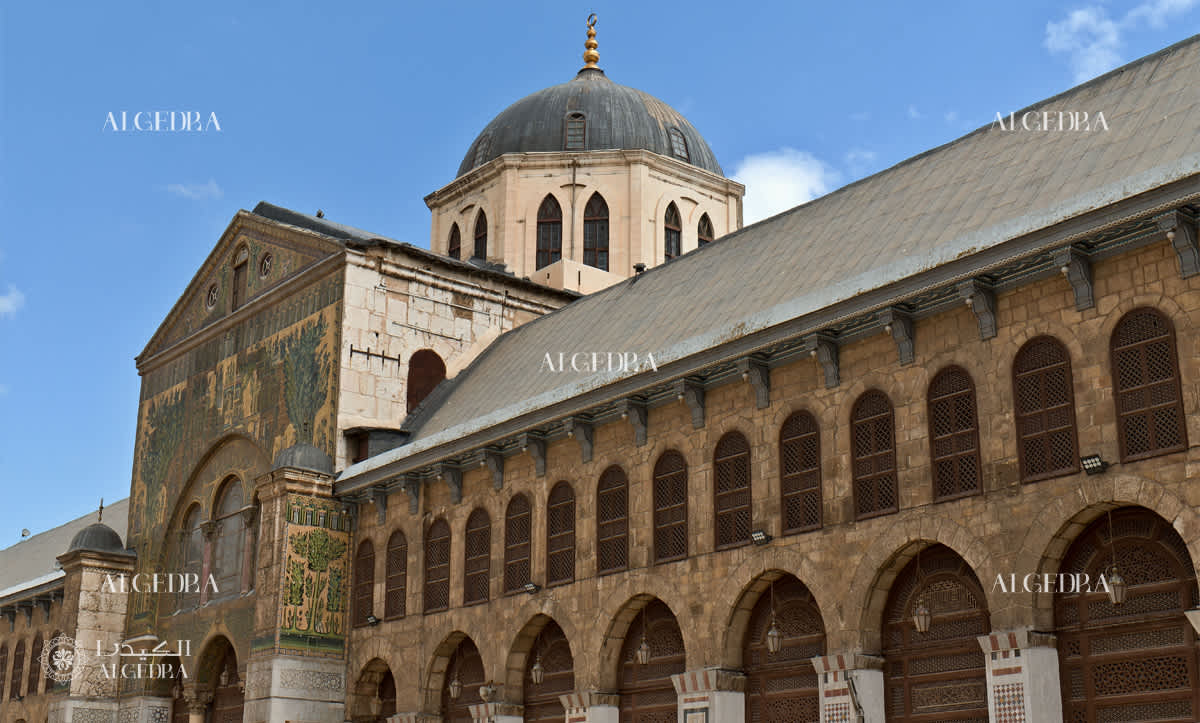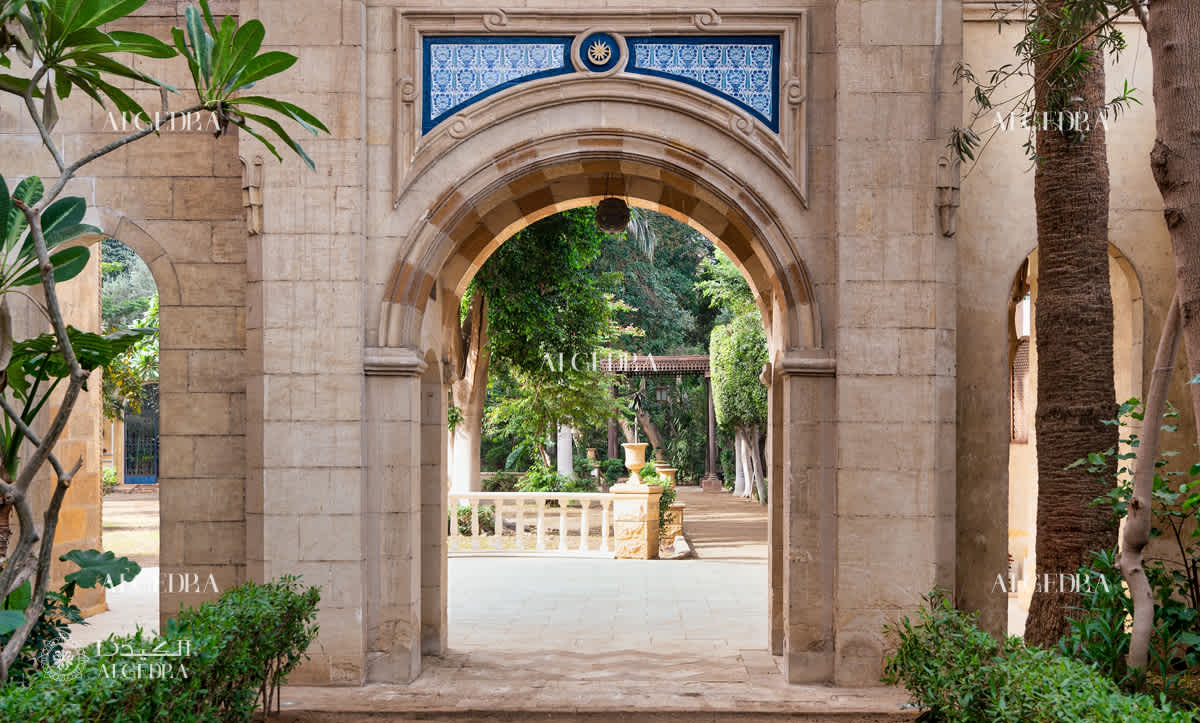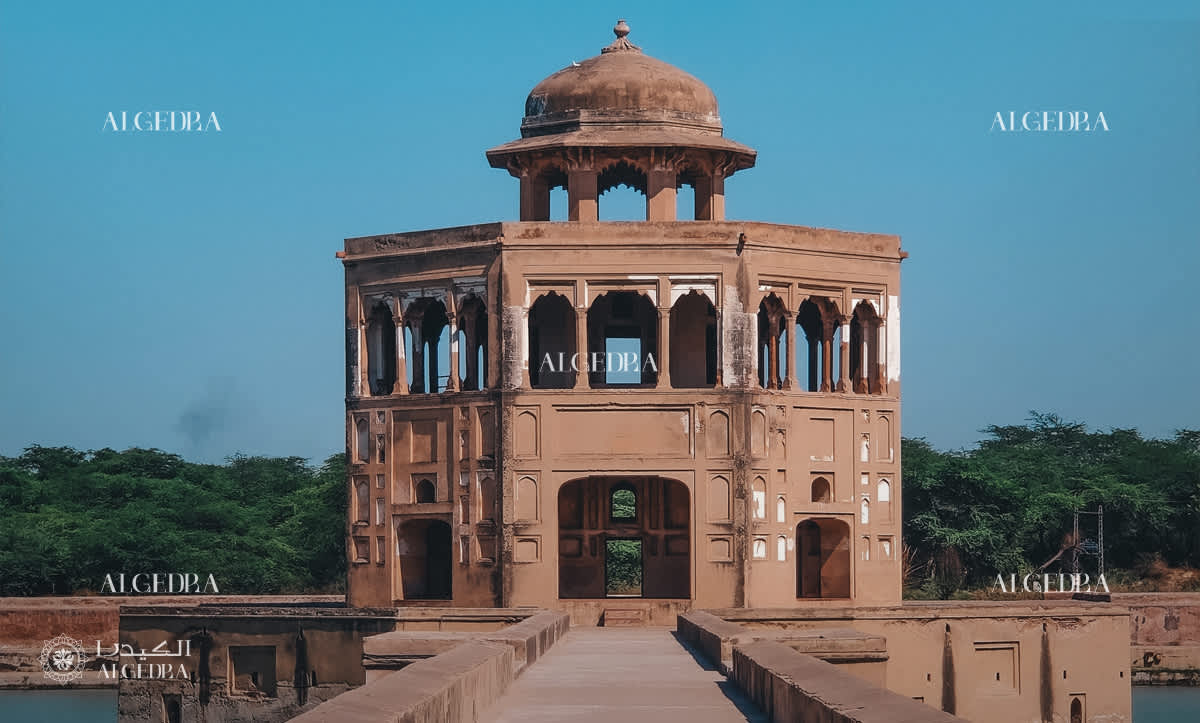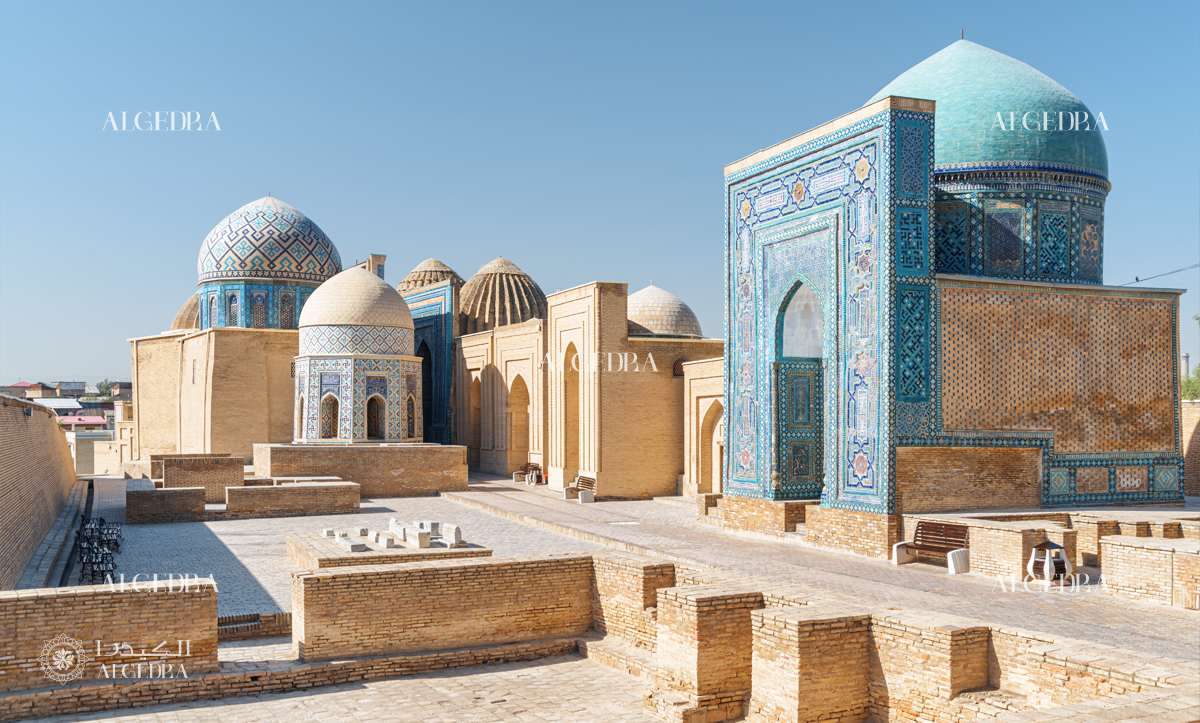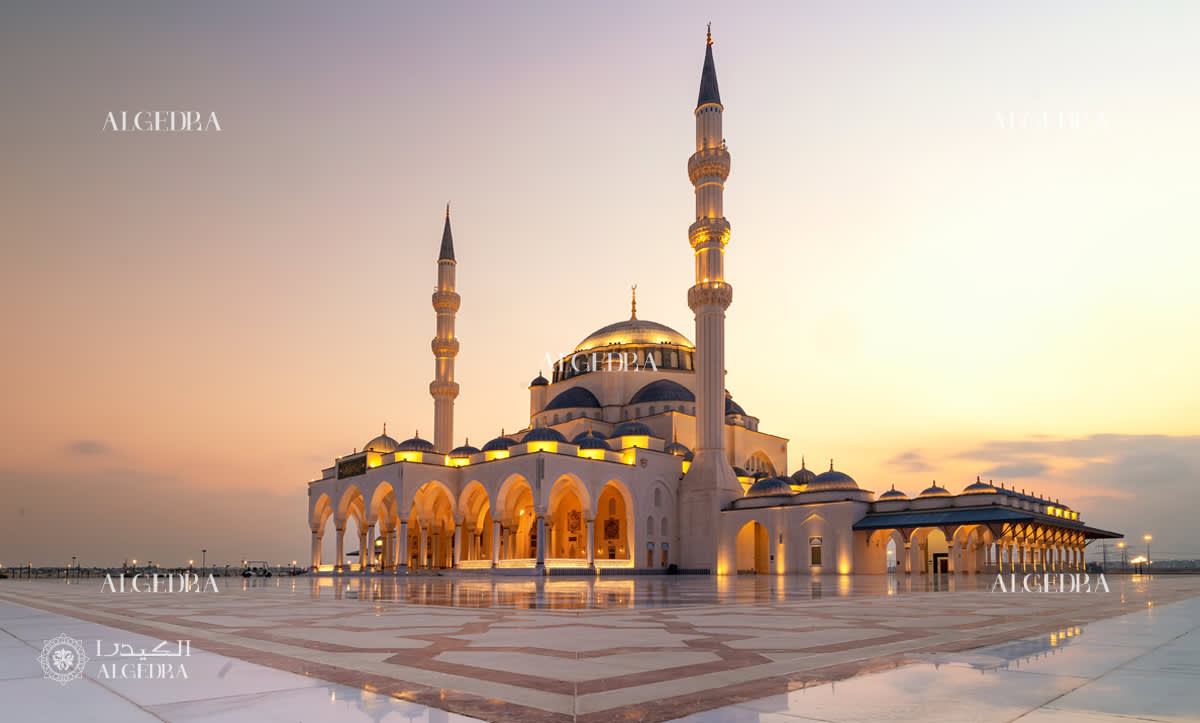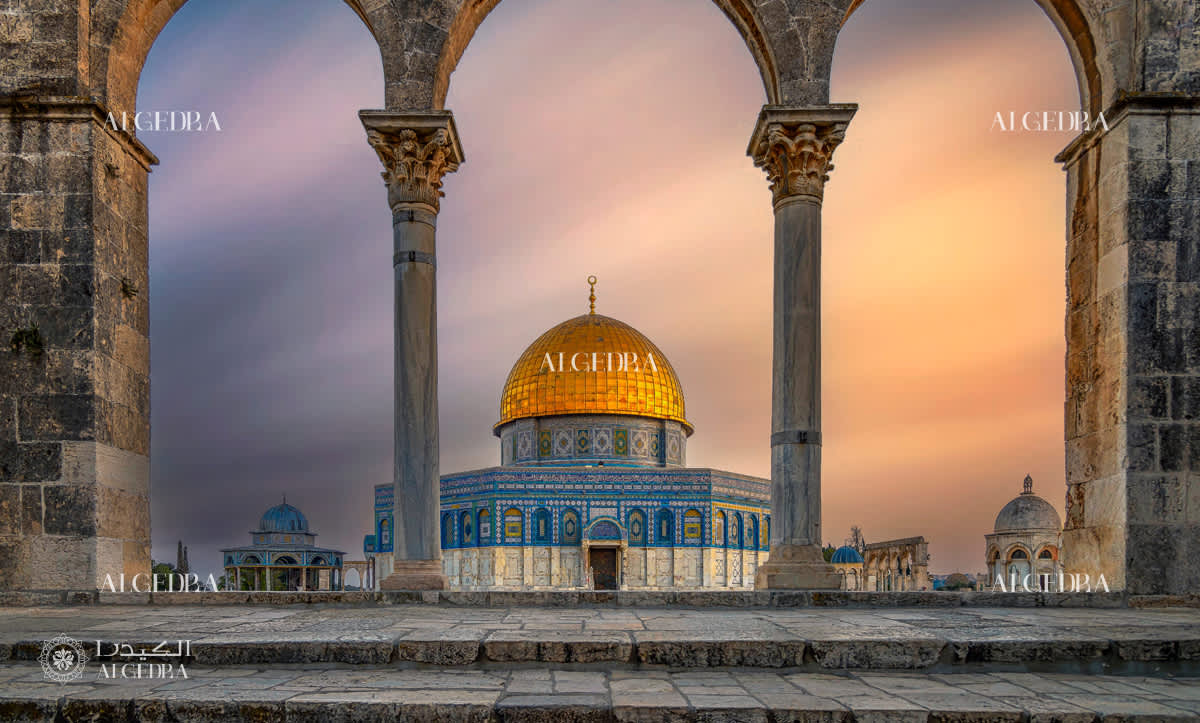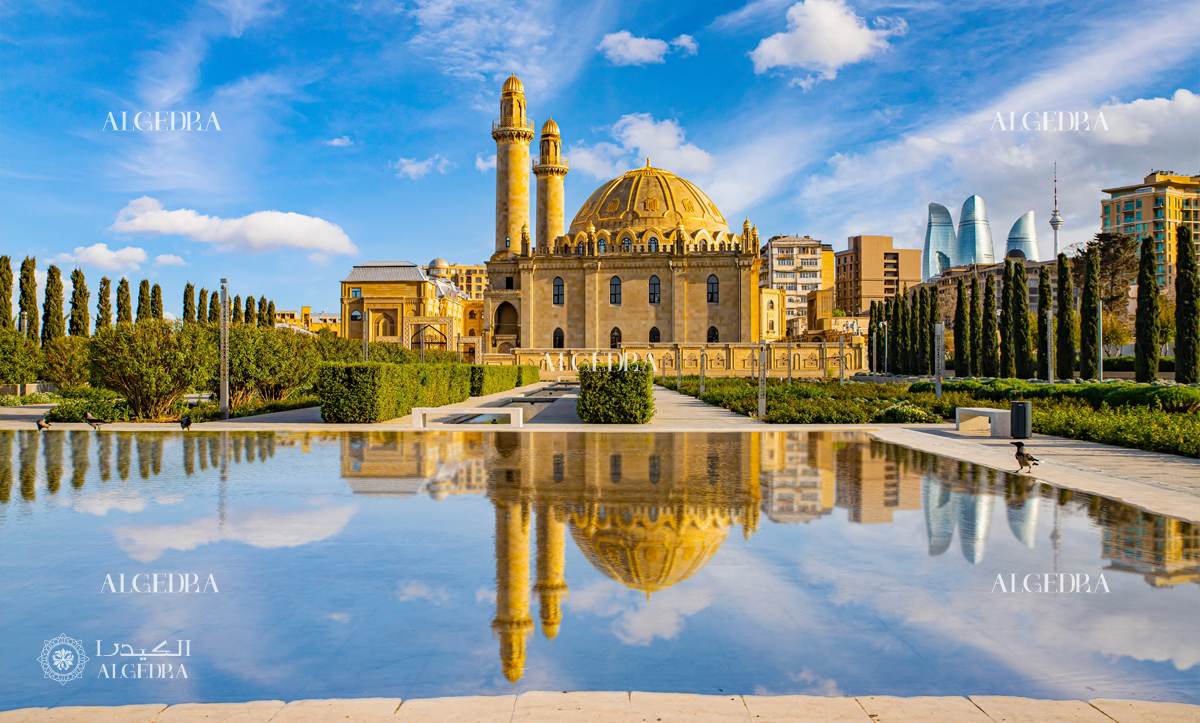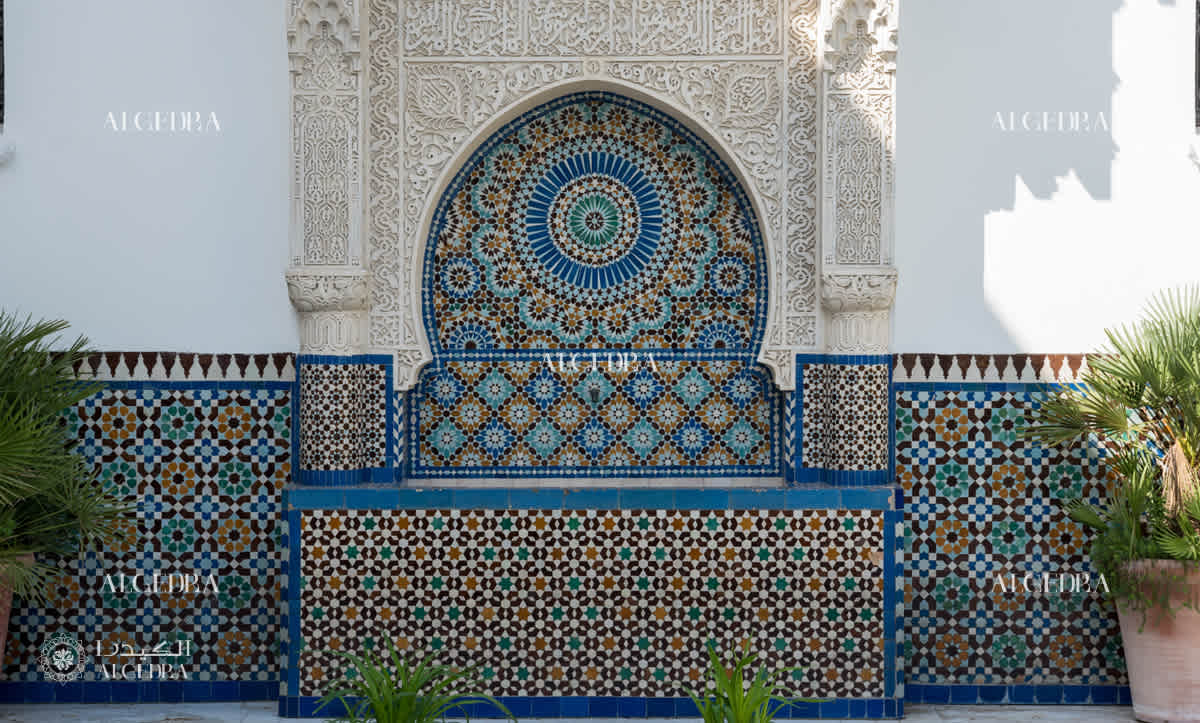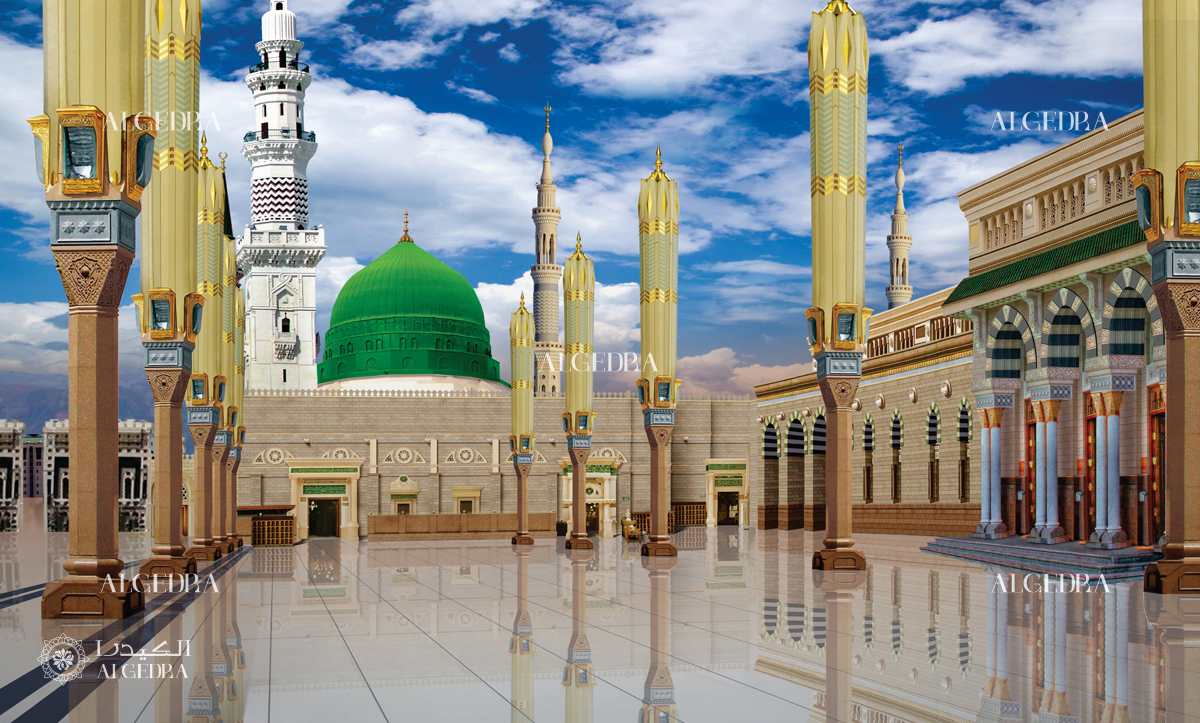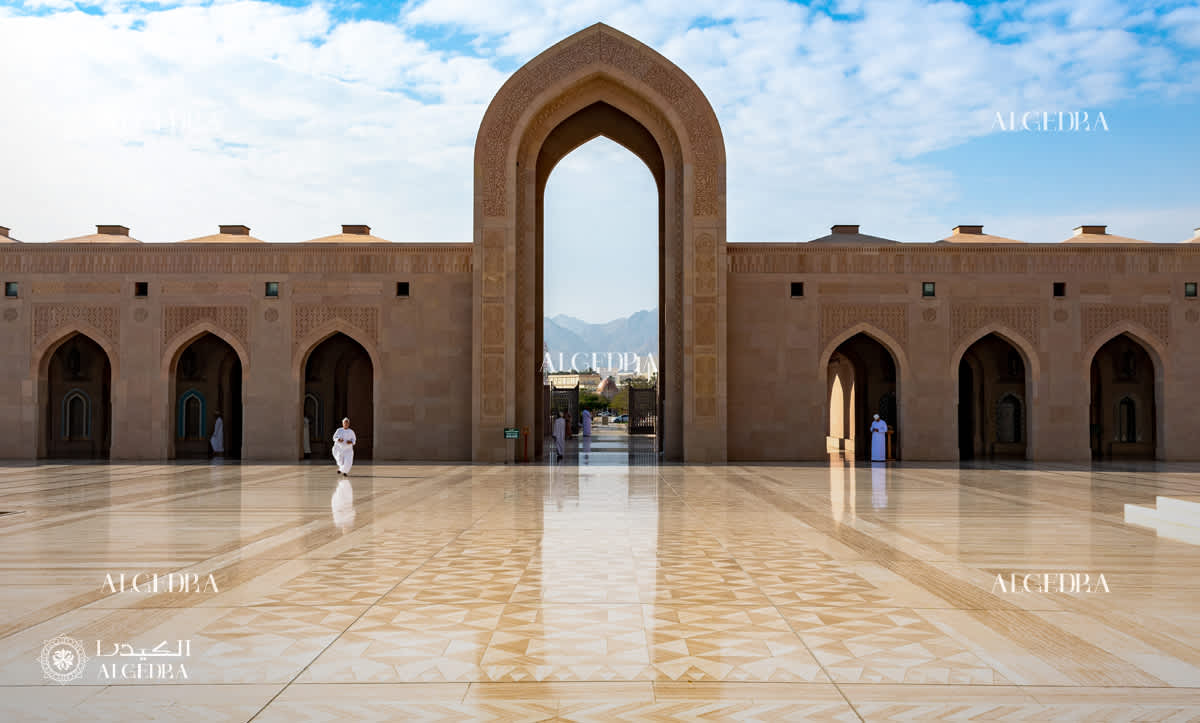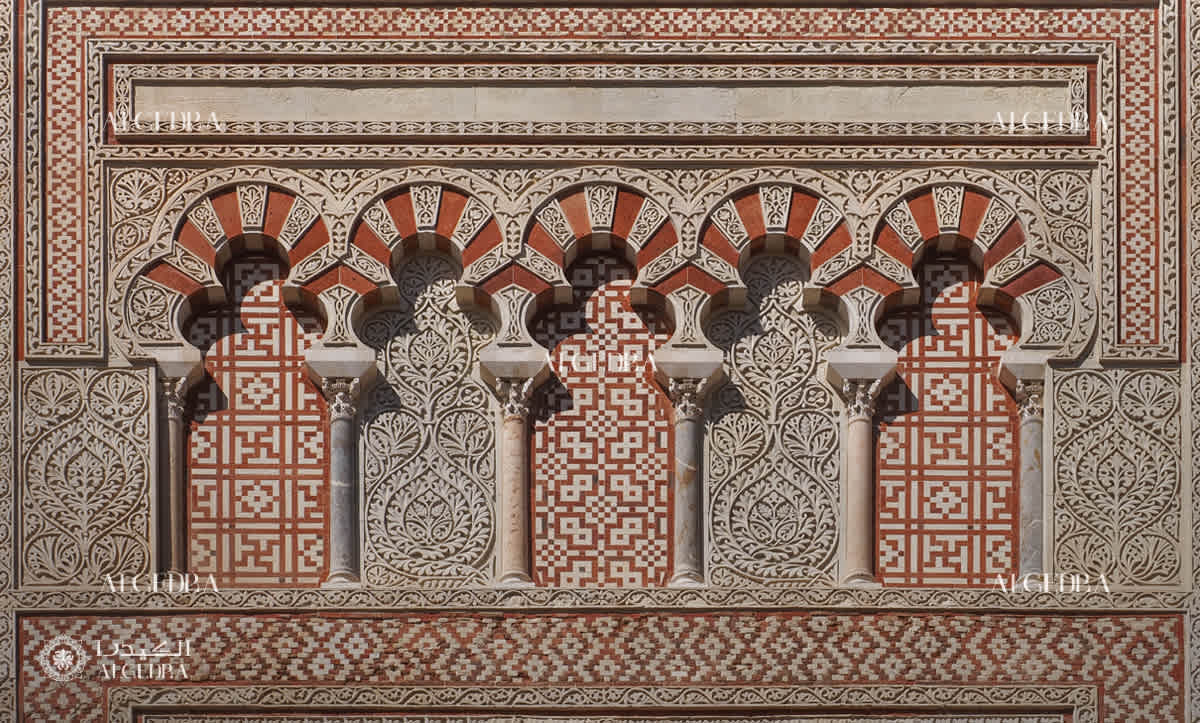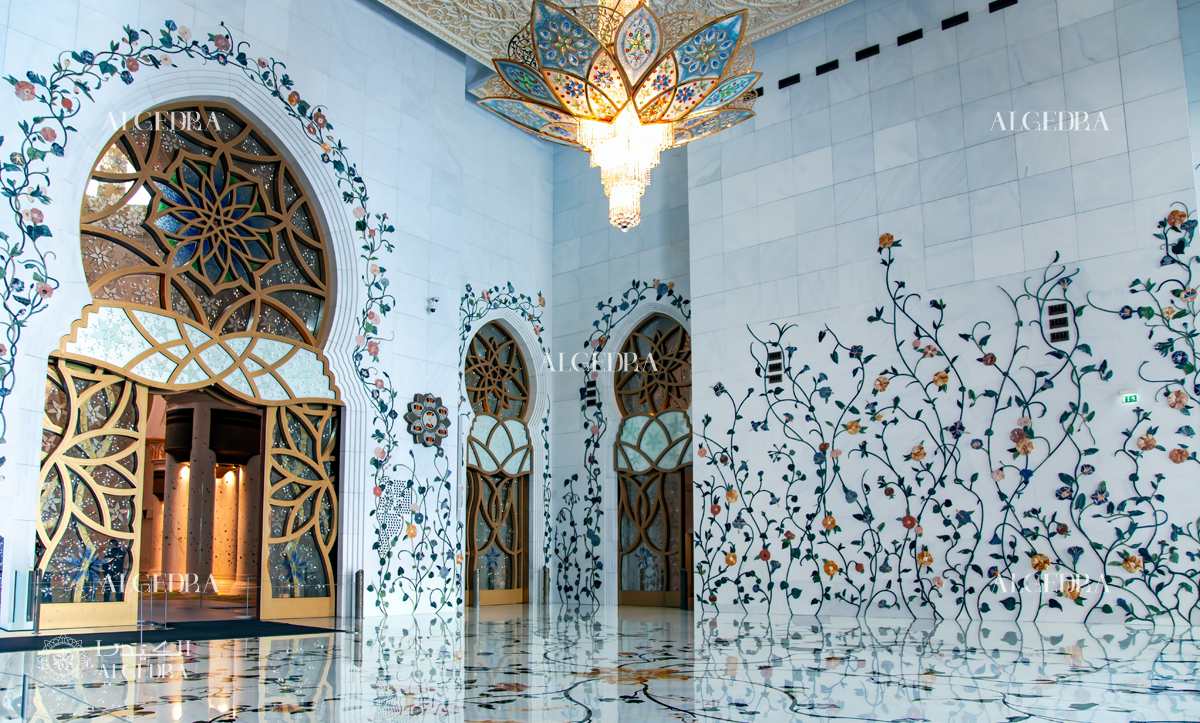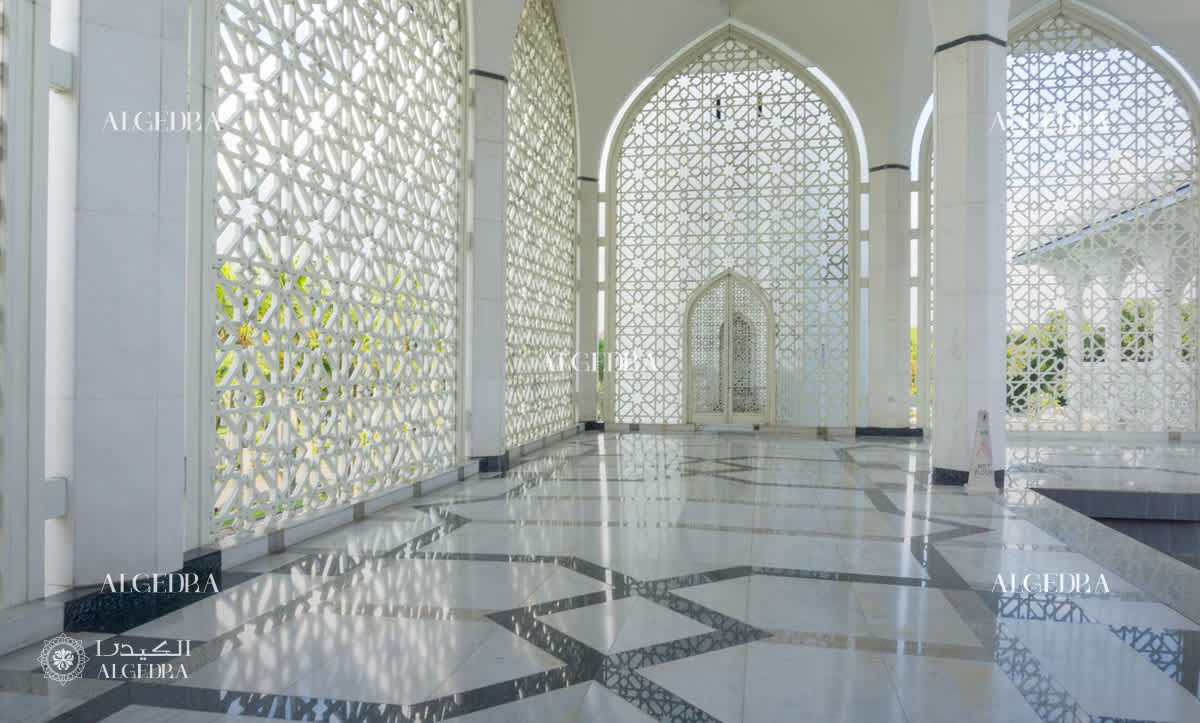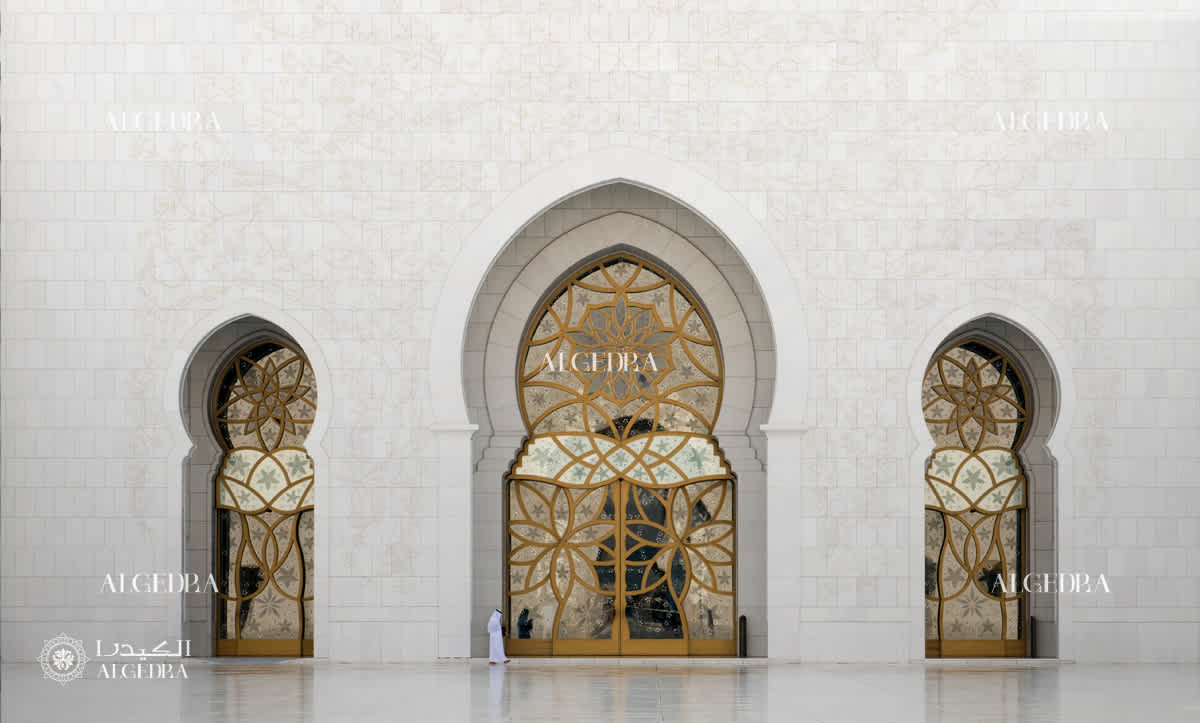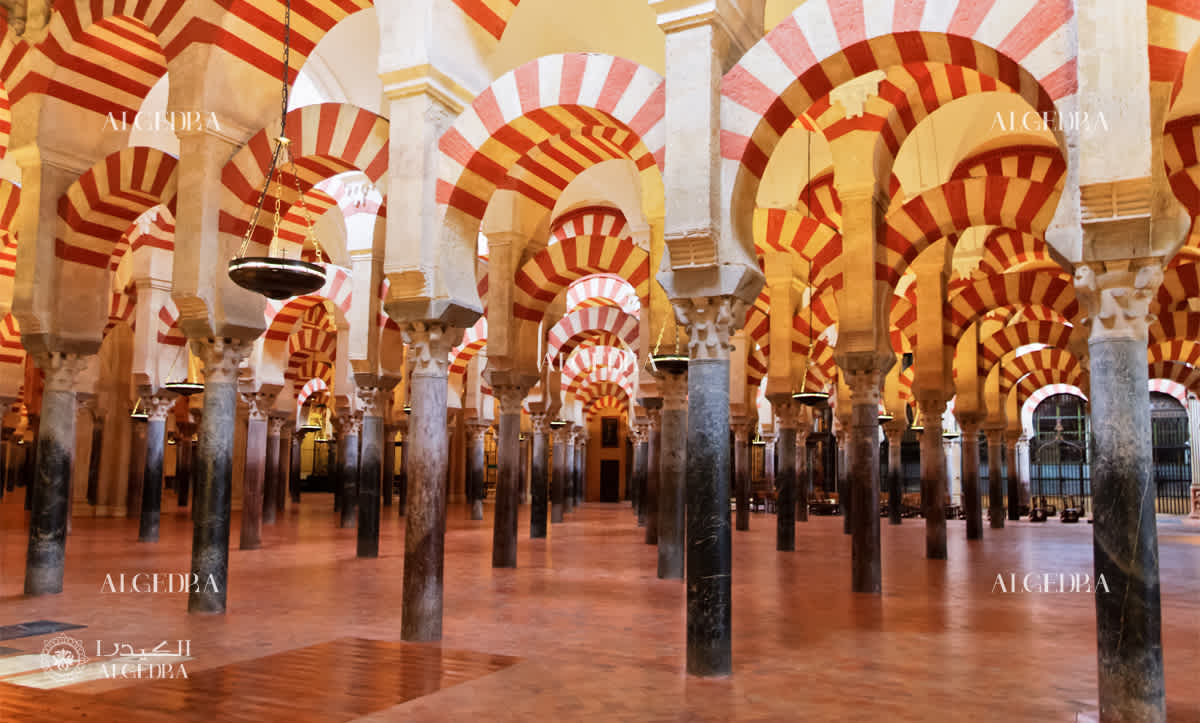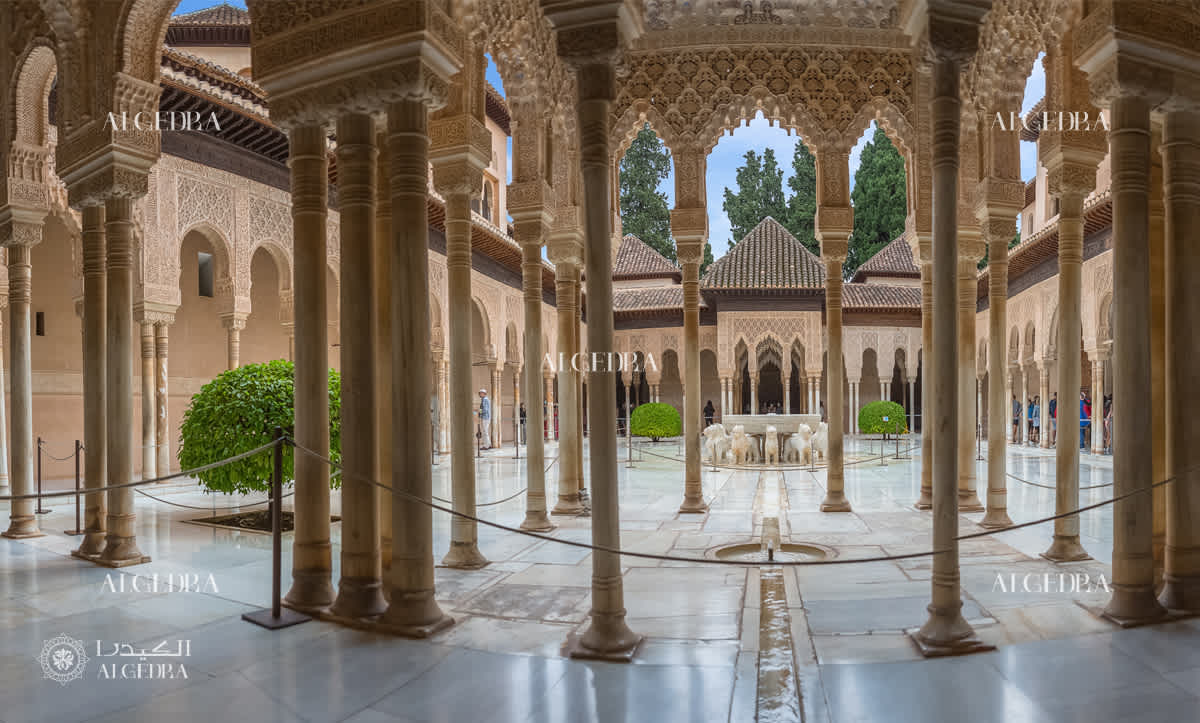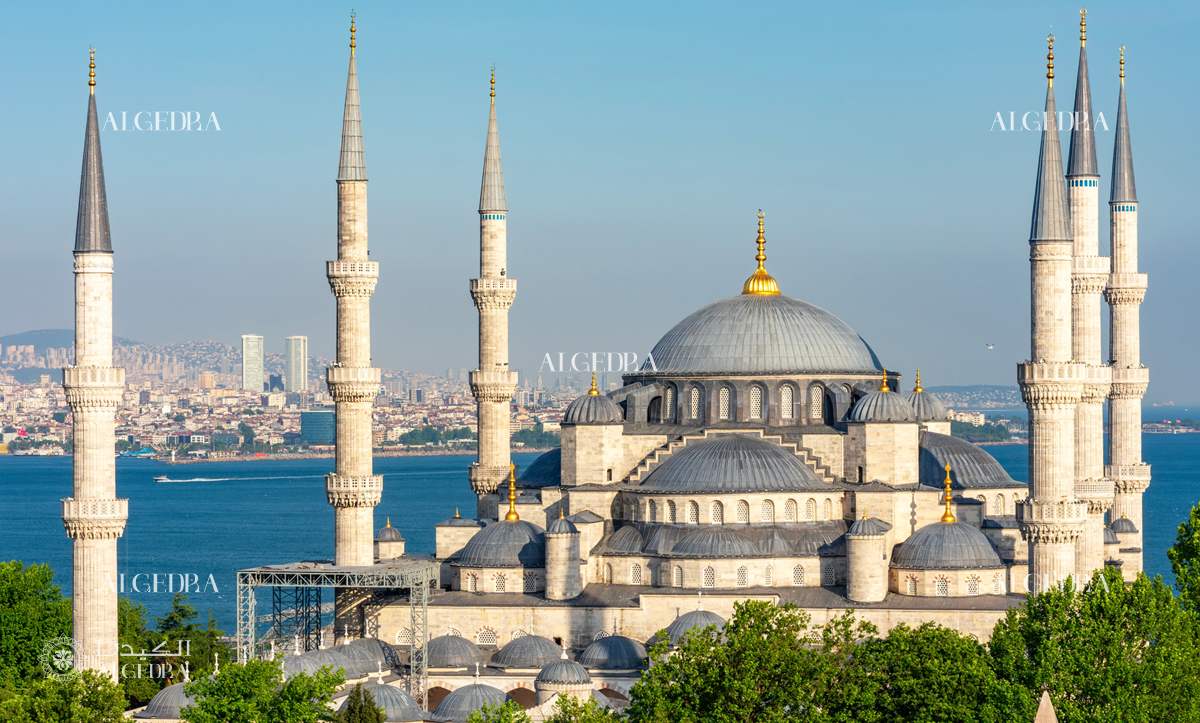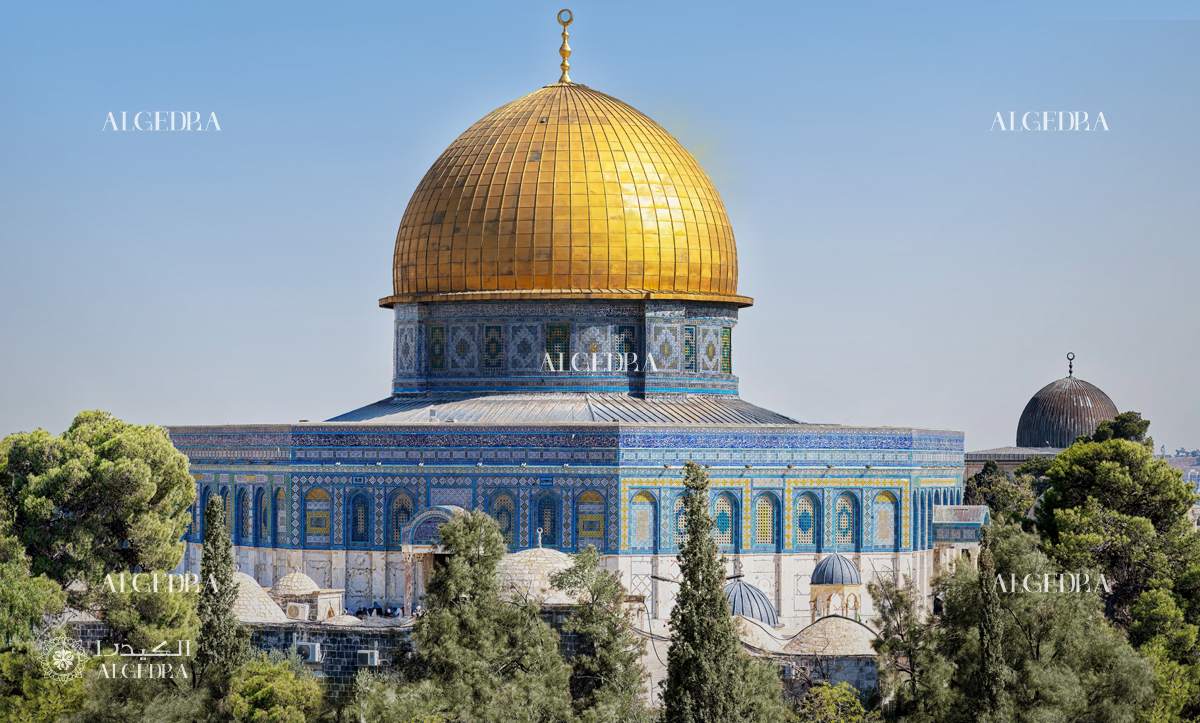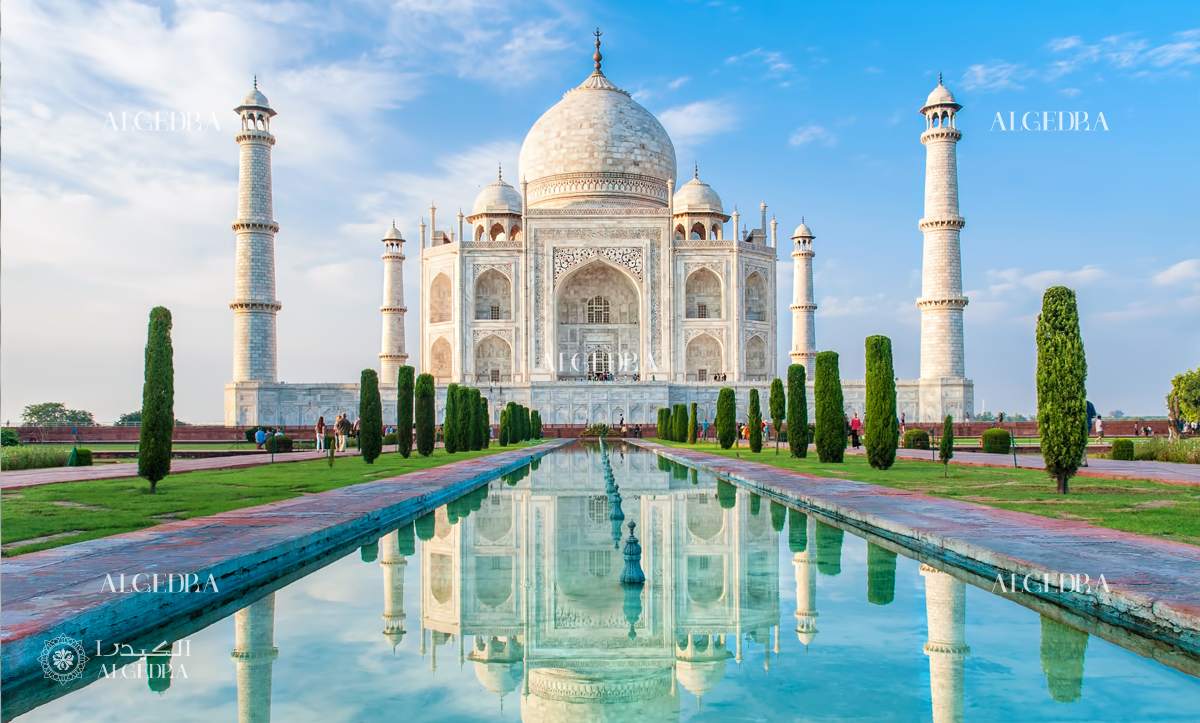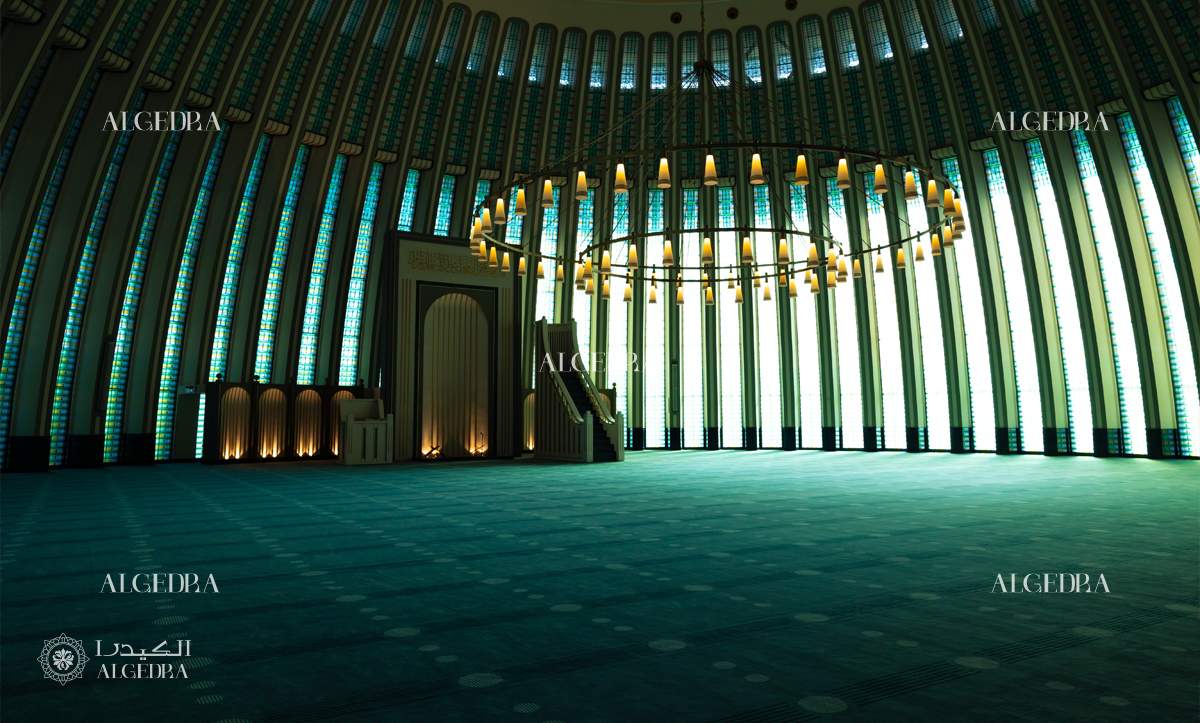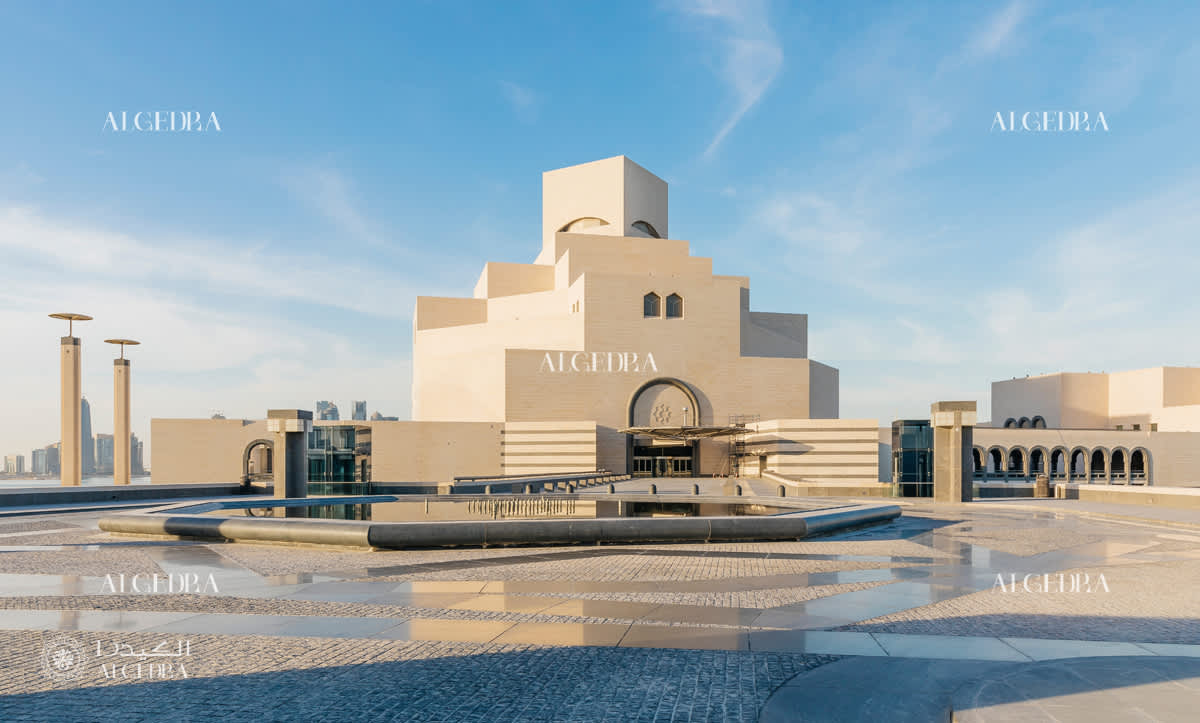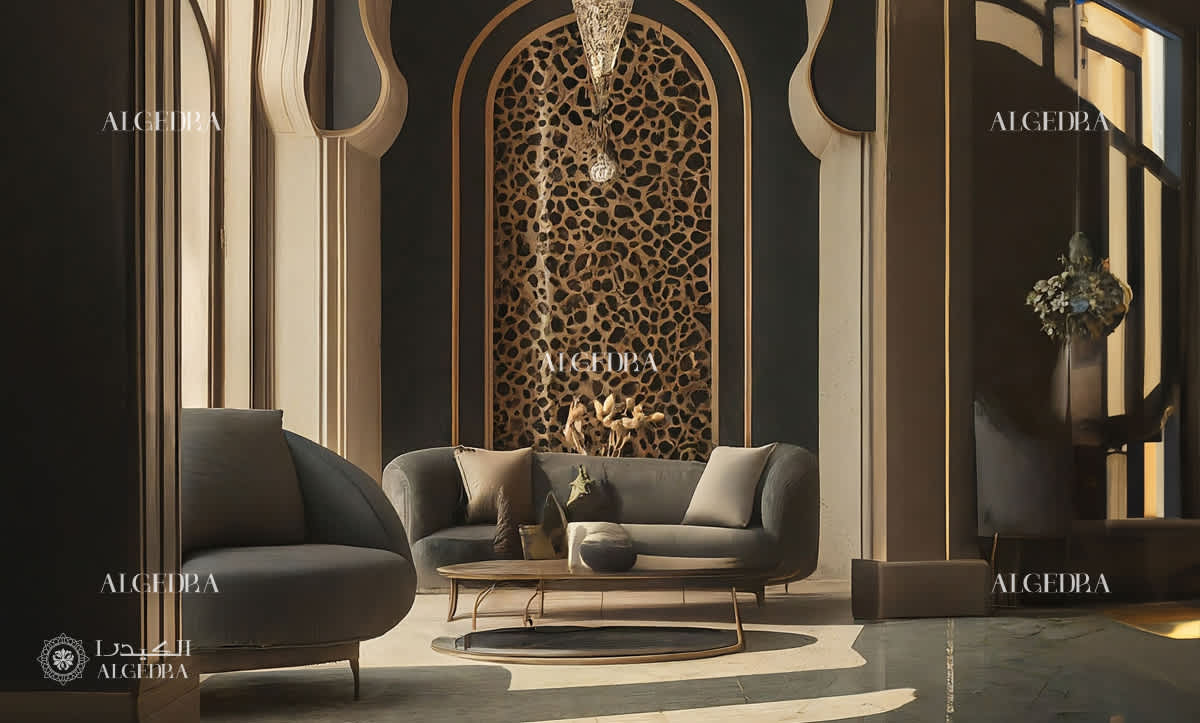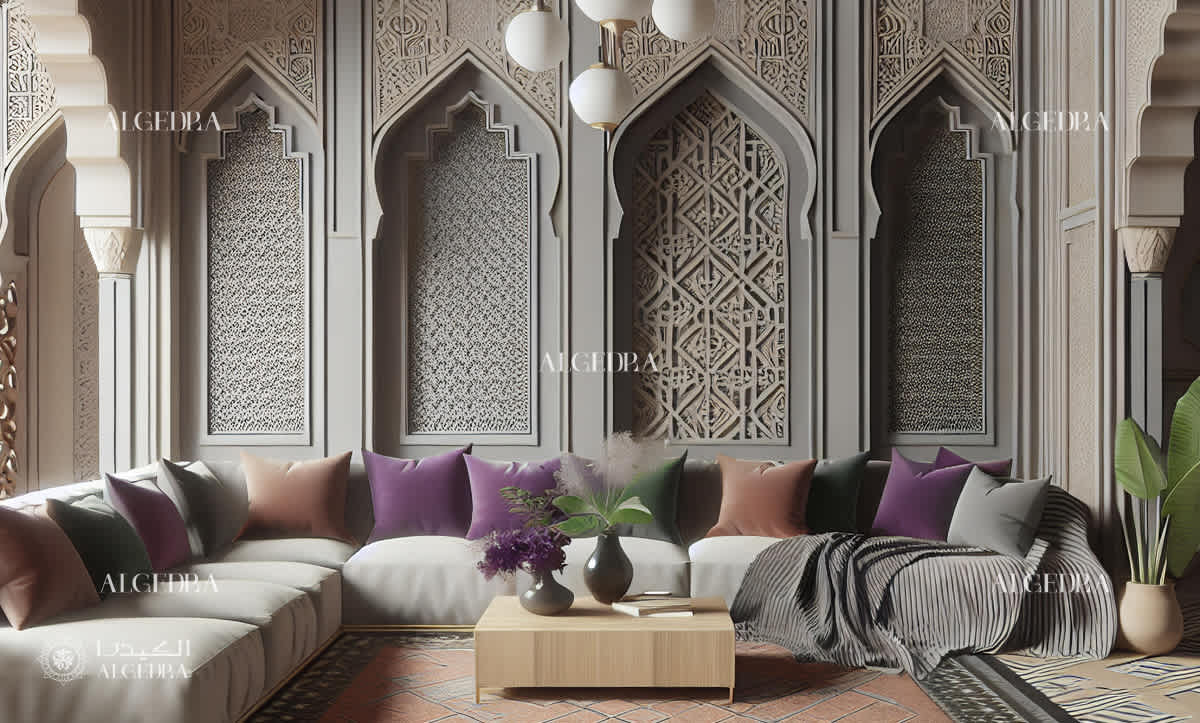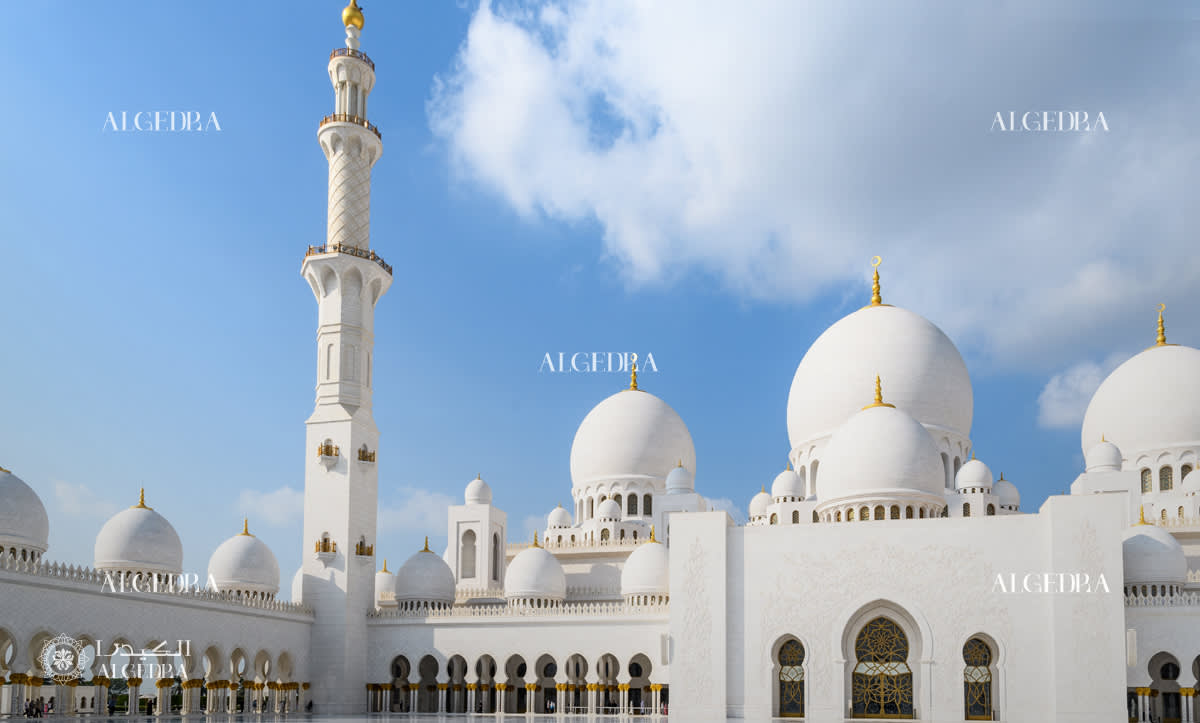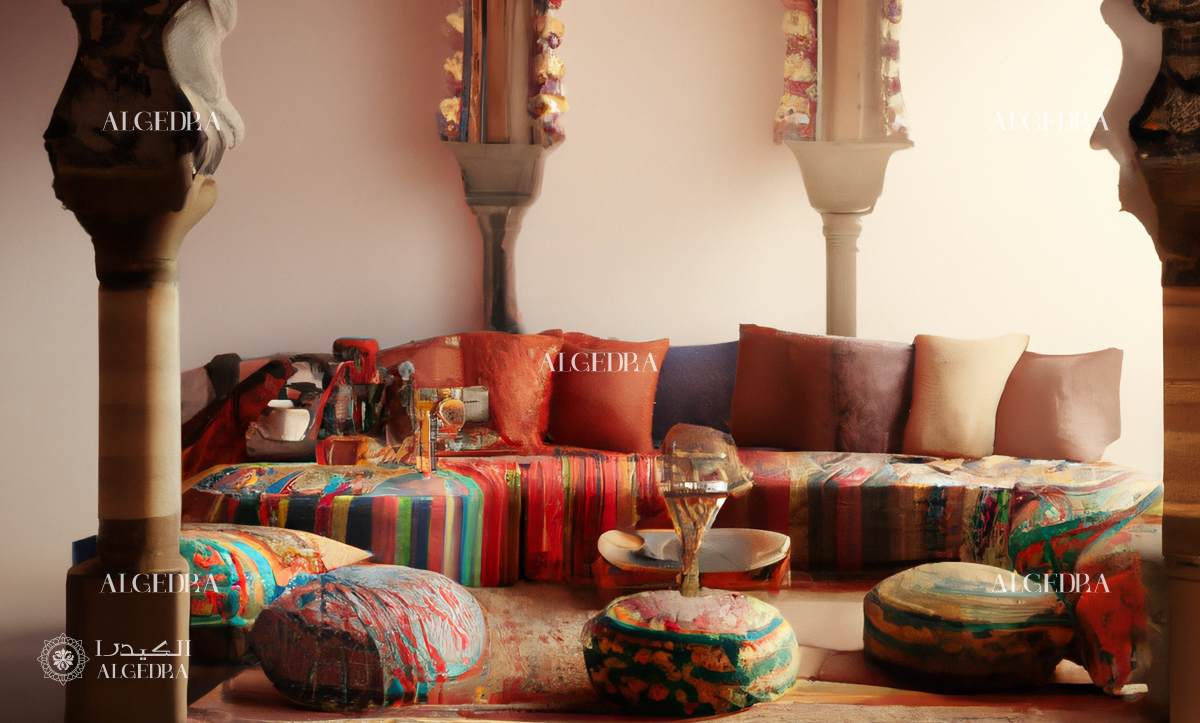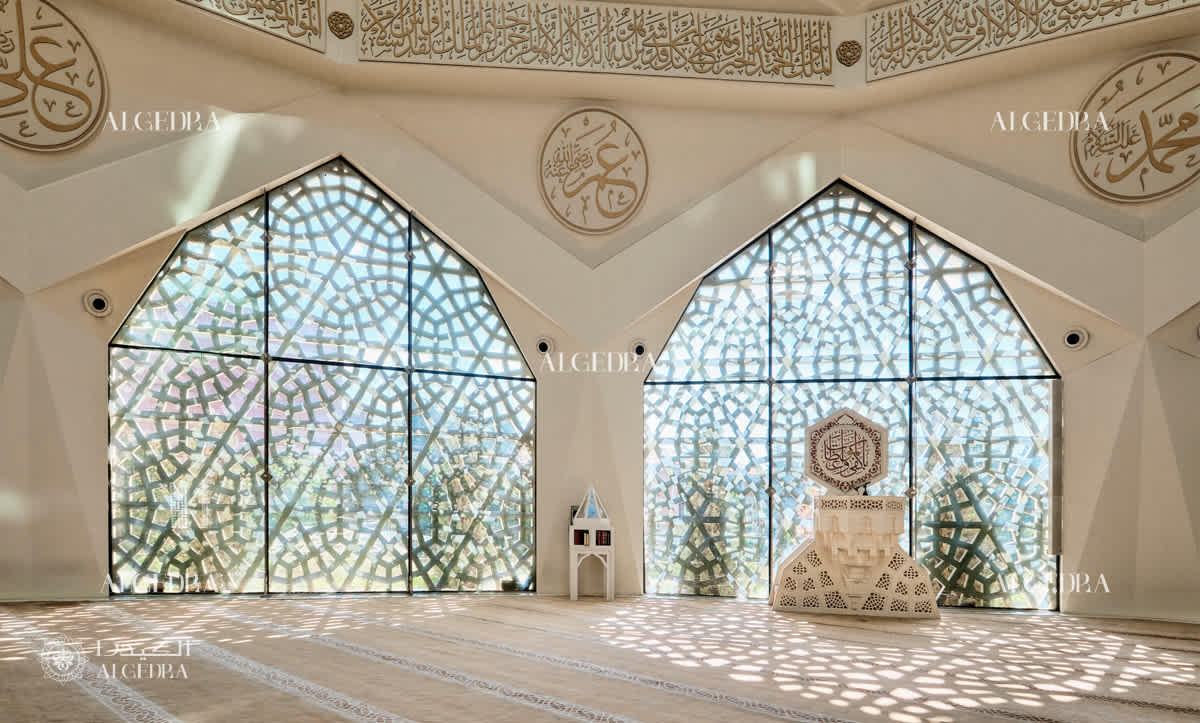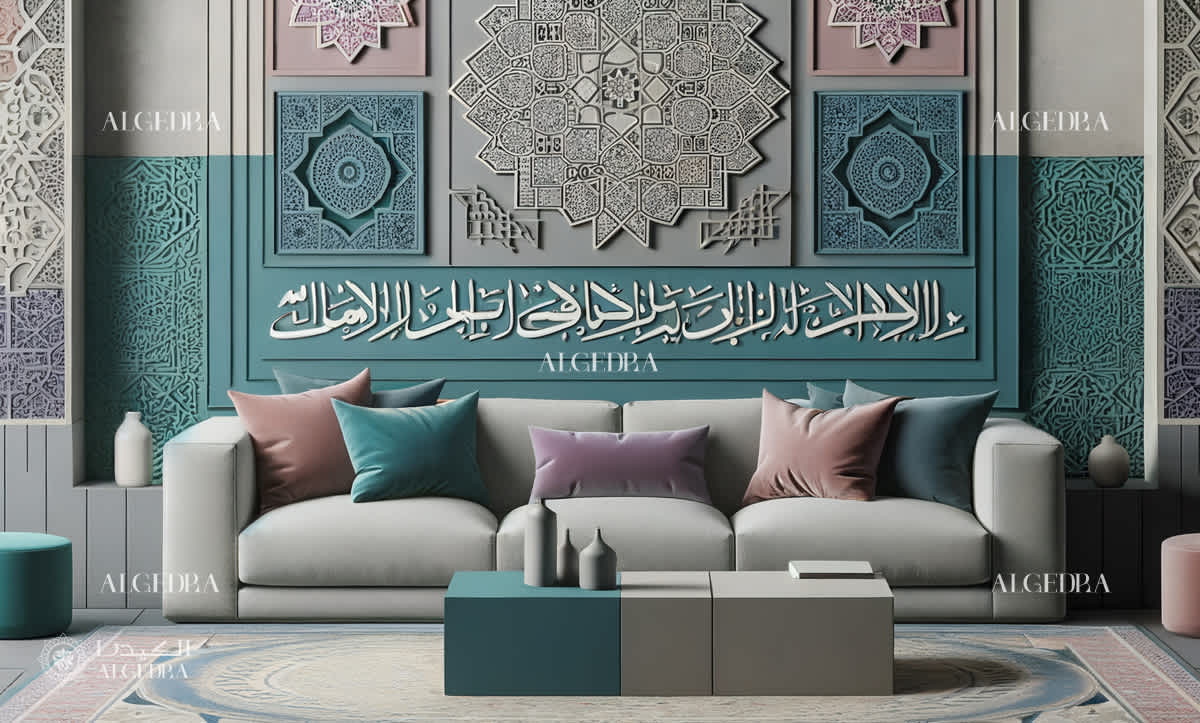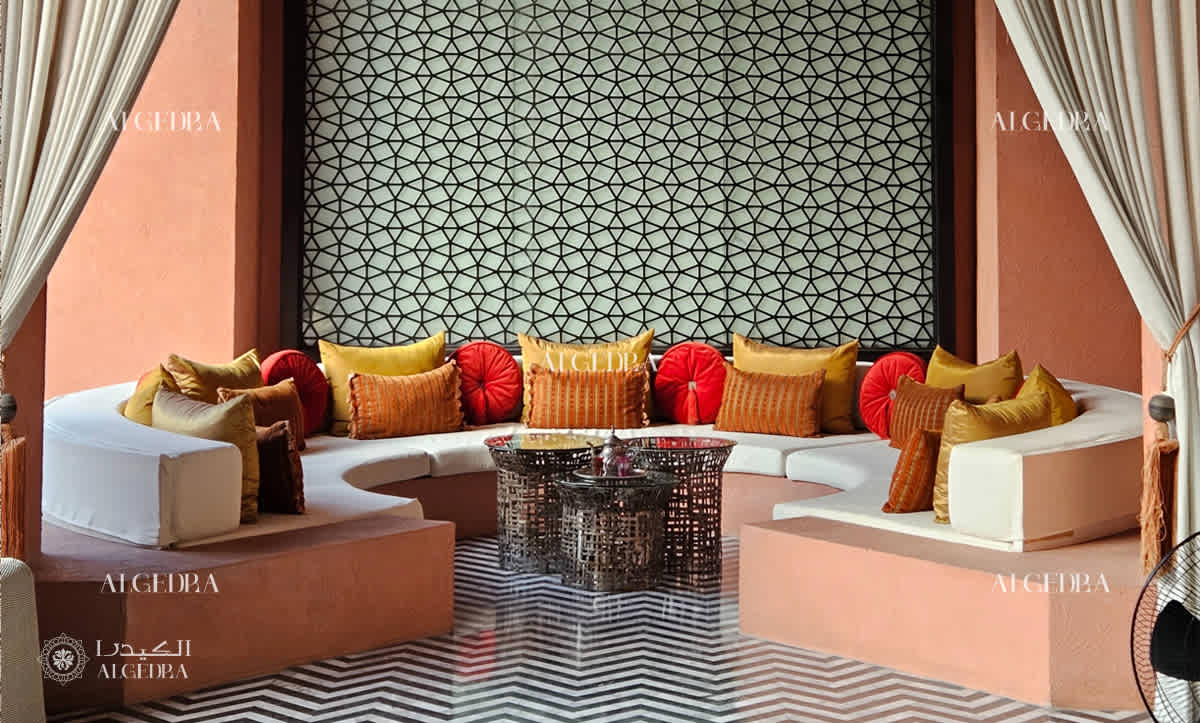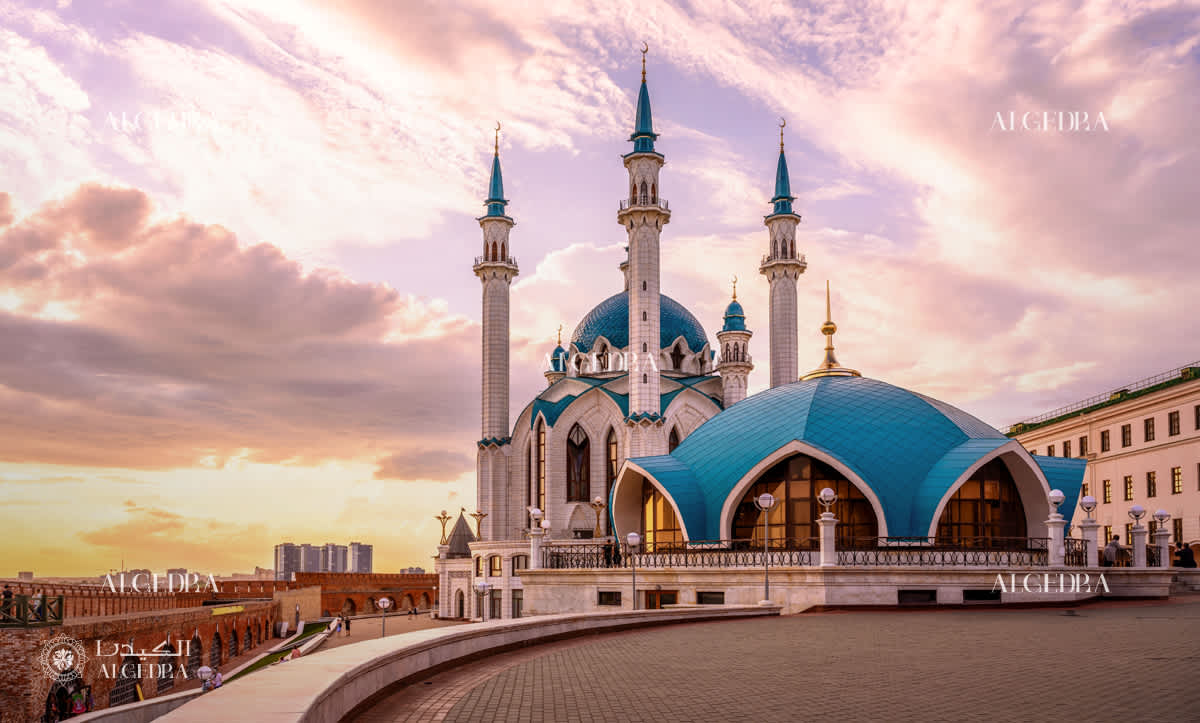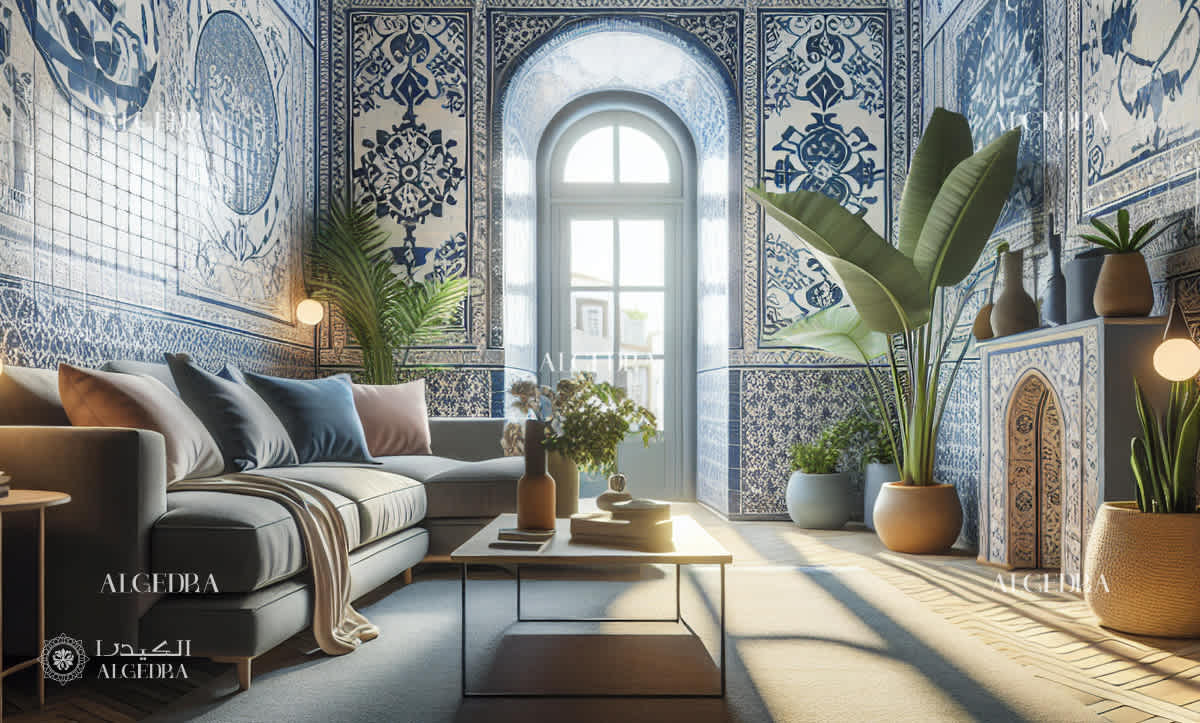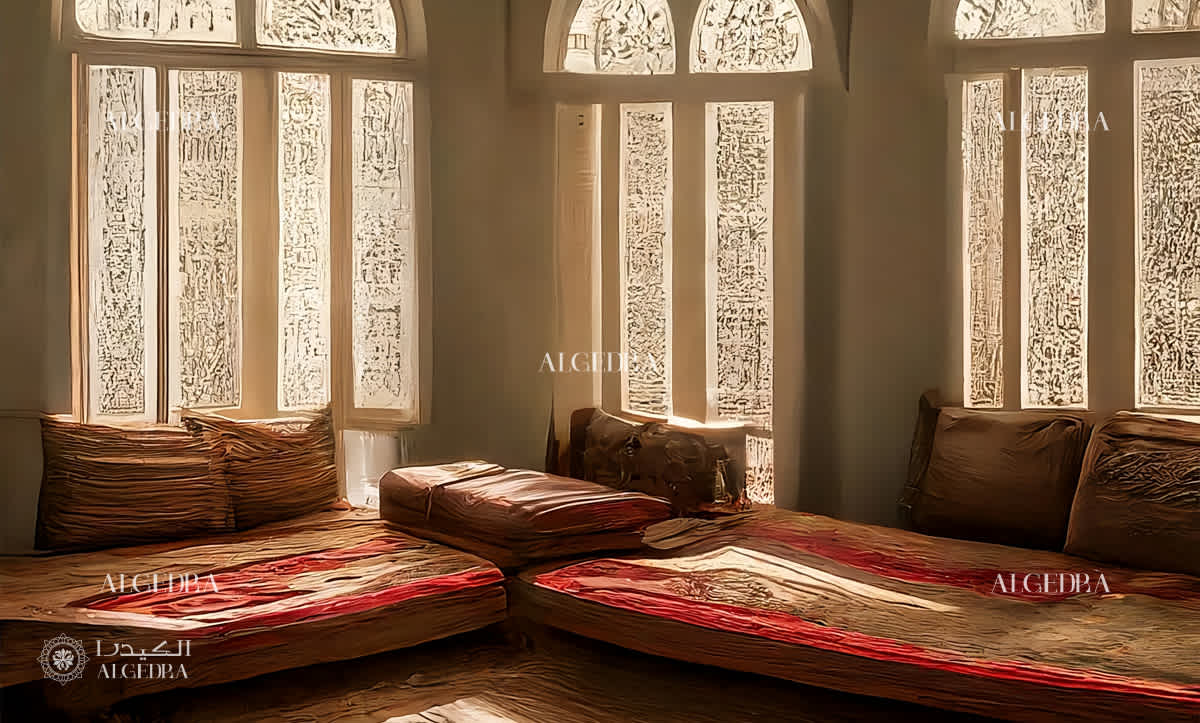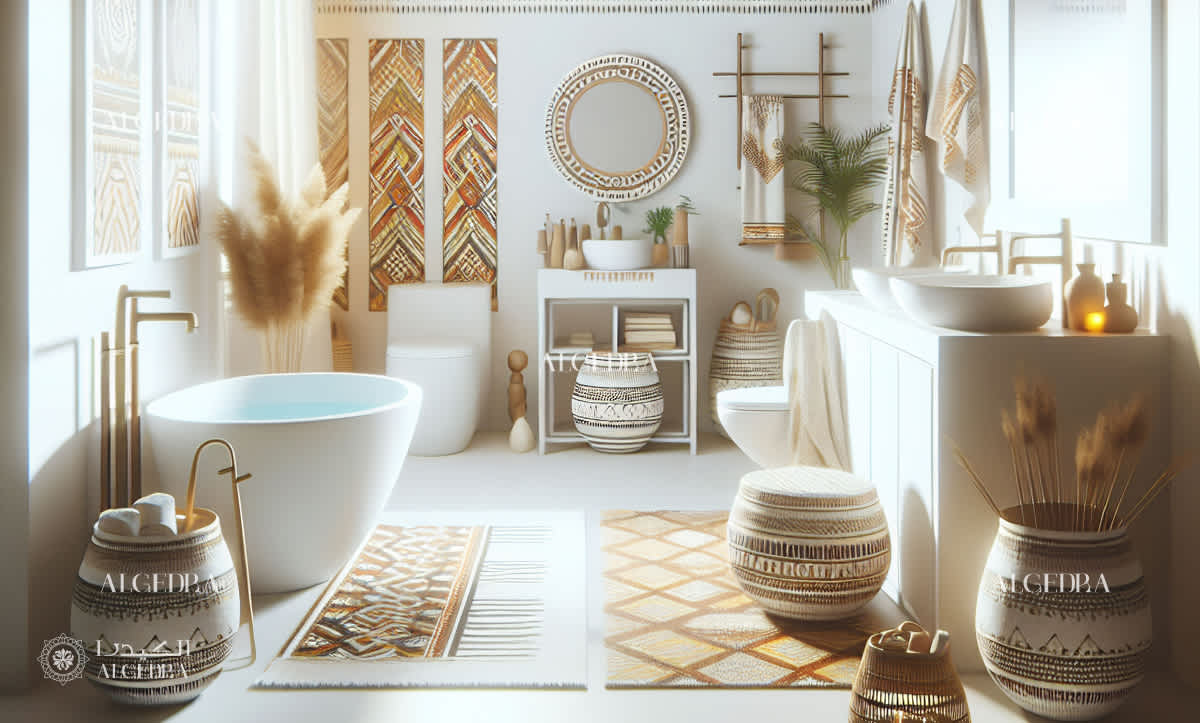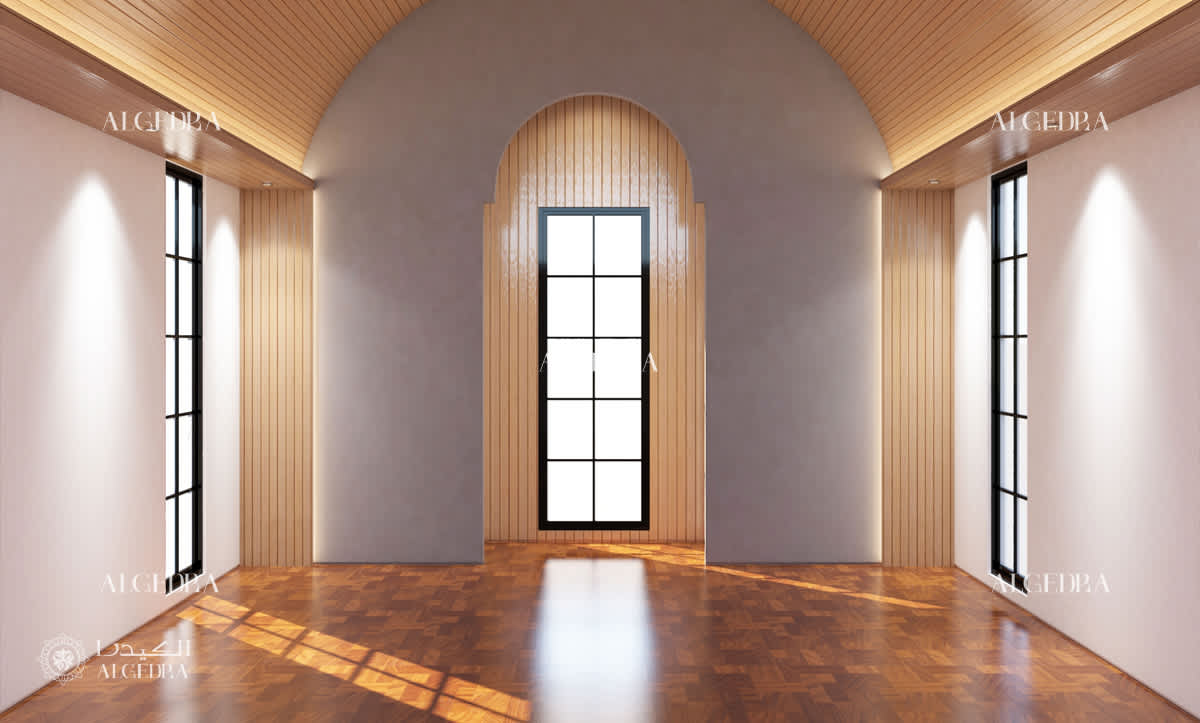Home Page | Blog | The Ultimate Guide to Islamic Architecture | History, Key Features, and Modern Design
The Ultimate Guide to Islamic Architecture | History, Key Features, and Modern Design
9/5/2024
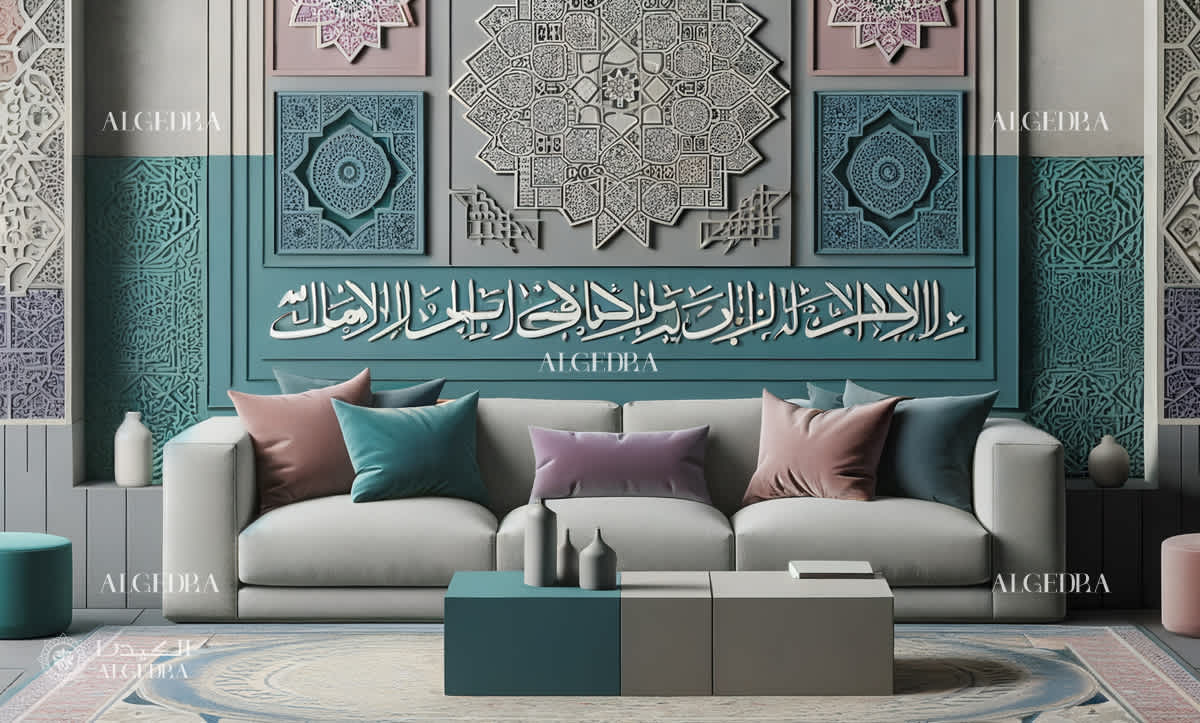
Islamic architecture has long been implemented for its elaborate beauty, cultural significance, and spiritual depth. From majestic domes to detailed tile work, this architectural style reflects centuries of tradition and continues to inspire modern design.
In this comprehensive guide, we explore the history, characteristics, materials, and applications of Islamic architecture, offering insights on how to incorporate its elements into contemporary spaces.
History of Islamic Architecture
The history of Islamic architecture spans over 1,400 years, evolving through various cultural influences and regional adaptations. Understanding its development offers valuable insights into its enduring appeal and timeless style.
1. Early Islamic Architecture (7th - 10th Century)
● Origins in the Arabian Peninsula: The earliest Islamic architecture was influenced by the local traditions of the Arabian Peninsula.
● Byzantine and Persian Influences: The expansion of the Islamic empire brought significant influence from Byzantine and Persian architecture.
● Umayyad Innovations: The Umayyad Caliphate introduced key innovations, including the development of the first mosques.
● Abbasid Contributions: The Abbasid period saw the rise of monumental architecture, particularly in Baghdad and Samarra.
● Regional Variations: As Islam spread, regional variations emerged, reflecting local traditions and materials.
2. The Golden Age of Islamic Architecture (10th - 15th Century)
● Fatimid and Ayyubid Dynasties: These periods saw the construction of iconic mosques and palaces in Egypt and the Levant.
● Seljuk Influence: The Seljuks introduced new structural techniques, including the use of the iwan in mosques.
● Mamluk Contributions: Mamluk architecture is characterized by its elaborate stonework and the use of large courtyards.
● Moorish Architecture in Spain: The Moors brought Islamic architecture to Spain, with the Alhambra as a prime example.
● Ottoman Innovations: The Ottoman Empire expanded Islamic architectural traditions, adding elements such as the central dome mosque.
3. Decline and Transformation (15th - 19th Century)
● Safavid Empire: In Persia, the Safavids continued the development of mosque architecture, with Isfahan as a key example.
● Mughal Architecture in India: The Mughals merged Islamic and local Indian styles, resulting in iconic structures like the Taj Mahal.
● Decline of the Caliphates: The political decline of Islamic empires led to a reduced emphasis on monumental architecture.
● Colonial Influences: European colonization introduced new architectural styles, leading to a merge of Islamic and Western elements.
● Preservation Efforts: By the 19th century, efforts were made to preserve and restore key Islamic architectural sites.
4. 20th Century Revival
● Nationalist Movements: In the 20th century, newly independent Muslim-majority countries sought to revive and celebrate Islamic architectural traditions.
● Architectural Modernism: Modernist architects began incorporating Islamic motifs into contemporary designs.
● Globalization of Islamic Architecture: Islamic architecture gained global recognition, influencing designs worldwide.
● Conservation Challenges: The preservation of historic Islamic architecture became a significant concern amid urbanization and modernization.
● Architectural Education: Institutions began offering specialized programs in Islamic architectural studies, creating a new generation of architects.
5. Contemporary Islamic Architecture
● Integration with Modern Design: Contemporary Islamic architecture often blends traditional elements with modern materials and techniques.
● Global Influences: Islamic architecture today is influenced by global architectural trends, resulting in diverse interpretations.
● Technological Advancements: The use of advanced technology has enabled more elaborate and large-scale designs in Islamic architecture.
● Cultural Heritage Preservation: Efforts continue to preserve and restore historic Islamic sites while integrating them into modern urban landscapes.
Characteristics of Islamic Architecture as Defining Features
Islamic architecture features for its distinct characteristics, each contributing to the overall aesthetic and spiritual experience of the spaces created.
1. Geometric Patterns
● Symbolism in Patterns: Geometric patterns represent the infinite nature of the universe and the unity of all things in Islamic culture.
● Mathematical Precision: These patterns are often based on complex mathematical principles, reflecting the intellectual achievements of Islamic scholars.
● Tile Work: Geometric patterns are commonly seen in tile work, particularly in mosques and palaces.
● Carvings and Reliefs: Patterns are also used in stone and wood carvings, adding texture and depth to surfaces.
● Textile Designs: Geometric motifs extend to textiles, including rugs and tapestries, used in both religious and domestic settings.
2. Arches and Domes
● Structural Significance: Arches provide essential support while contributing to the visual harmony of a space.
● Horseshoe Arches: This type of arch is particularly common in Islamic architecture, recognized for its unique shape and aesthetic appeal.
● Pointed Arches: Pointed arches are often used in more modern interpretations of Islamic design, offering a more contemporary look.
● Muqarnas: These decorative, honeycomb-like structures are often found under domes or within arches, adding complexity and beauty.
● Dome Placement: Domes are strategically placed at the center of mosques and other significant buildings, symbolizing the heavens.
3. Ornamentation
● Calligraphy: Arabic calligraphy, particularly Quranic verses, is a prominent feature in Islamic ornamentation, adding spiritual significance to the space.
● Arabesque Designs: Flowing, interlaced patterns known as arabesques are common in Islamic art and architecture, symbolizing the interconnectedness of life.
● Floral Motifs: Floral designs are another common ornamental element, often used in tile work and carvings.
● Intricate Detailing: Islamic architecture is known for its fine details, with every element contributing to the overall aesthetic.
● Color Usage: Colors are used symbolically in Islamic ornamentation, with blues, greens, and golds being particularly prevalent.
4. Water Features
● Symbolism of Water: Water is a significant element in Islamic architecture, symbolizing purity and life.
● Fountains: Fountains are commonly found in courtyards and gardens, serving both aesthetic and functional purposes.
● Reflecting Pools: These pools are often used in mosques and palaces to create a serene and contemplative environment.
● Irrigation Systems: Islamic architecture has historically included advanced irrigation systems to support lush gardens in arid regions.
● Soundscapes: The sound of water flowing in fountains and pools contributes to the tranquil atmosphere of Islamic architectural spaces.
5. Courtyards
● Central Gathering Spaces: Courtyards are central gathering areas in Islamic homes and public buildings.
● Private Gardens: Courtyards often include gardens, providing a private and peaceful outdoor space.
● Shaded Walkways: Walkways around courtyards are typically shaded, offering relief from the sun in hot climates.
● Open-Air Prayer Spaces: In mosques, courtyards are often used as additional prayer space, particularly during large gatherings.
● Social Hubs: In residential architecture, courtyards function as social hubs where families and guests can gather.
Materials Used in Islamic Architecture - Traditional and Modern Choices
Materials play a critical role in Islamic architecture, contributing to both the functionality and aesthetic appeal of the structures.
1. Traditional Materials
● Stone: Stone is commonly used for building foundations and structural elements, offering durability and strength.
● Marble: Marble is often used for decorative elements, including columns, facades, and flooring.
● Wood: Wood is frequently employed for elaborate carvings, paneling, and ceiling beams, adding warmth to interiors.
● Ceramic Tiles: Ceramic tiles are a signature material in Islamic architecture, known for their vibrant colors and elaborate patterns.
● Plaster: Plaster is used for detailed carvings and decorative panels, particularly in interiors.
2. Modern Materials
● Glass: Glass is increasingly used in contemporary Islamic architecture, allowing for the integration of natural light.
● Steel: Steel provides structural support in modern Islamic buildings, enabling the creation of large, open spaces.
● Concrete: Concrete is used for both structural and decorative purposes, offering flexibility in design.
● Aluminum: Aluminum is often used for window frames, doors, and decorative panels, contributing to a modern aesthetic.
● Composite Materials: Composite materials offer a blend of traditional and modern characteristics, suitable for contemporary interpretations of Islamic design.
3. Decorative Elements
● Tile Mosaics: Tile mosaics continue to be a prominent feature in modern Islamic architecture, preserving the tradition of intricate patterning.
● Metalwork: Metalwork, including brass and copper, is used for decorative screens, lanterns, and other elements.
● Stucco: Stucco is used for decorative finishes on walls and ceilings, often featuring intricate designs.
● Textiles: Textiles, including rugs and tapestries, are used to add color and texture to interiors.
● Glasswork: Stained glass and other glasswork are used to create colorful, light-filled spaces.
4. Finishes and Textures
● Polished Marble: Polished marble is used for flooring and wall finishes, adding a luxurious touch to interiors.
● Matte Finishes: Matte finishes are employed to create a more subdued and modern look in contemporary Islamic architecture.
● Textured Plaster: Textured plaster adds depth and interest to walls and ceilings, often used in traditional settings.
● Wood Grain: Wood grain finishes are used to highlight the natural beauty of wood in both traditional and modern designs.
● Smooth Stone: Smooth stone finishes are favored for exterior facades, creating a sleek and elegant appearance.
Iconic Structures That Define Islamic Architecture
Throughout history, Islamic architecture has produced some of the world’s most iconic structures, each reflecting the rich cultural and spiritual heritage of the Islamic world.
1. The Great Mosque of Córdoba
● Historical Significance: The Great Mosque of Córdoba is a masterpiece of early Islamic architecture in Spain.
● Architectural Features: The mosque is known for its horseshoe arches, hypostyle hall, and stunning mihrab.
● Cultural Influence: The mosque reflects the blending of Islamic and local Spanish architectural styles.
● Restoration Efforts: Over the centuries, the mosque has undergone various restoration efforts to preserve its historical integrity.
● Current Use: Today, the mosque functions as a cathedral, reflecting the complex history of religious and cultural exchange in Spain.
2. The Alhambra
● Architectural Splendor: The Alhambra in Granada, Spain, is known for its intricate tile work, courtyards, and water features.
● Symbolism: The palace's design reflects the Islamic emphasis on harmony with nature and the use of water as a central element.
● Craftsmanship: The Alhambra showcases the highest level of craftsmanship in Islamic architecture, with detailed carvings and intricate mosaics.
● Cultural Legacy: The Alhambra continues to inspire artists and architects, serving as a symbol of the Golden Age of Islamic art and architecture.
● Tourism and Preservation: The Alhambra is a major tourist destination, with ongoing efforts to preserve its architectural and historical significance.
3. The Blue Mosque
● Historical Context: The Blue Mosque in Istanbul, Turkey, was built during the Ottoman Empire and remains one of the most significant examples of Ottoman Islamic architecture.
● Architectural Elements: The mosque is famous for its large central dome, six minarets, and blue-tiled interior.
● Cultural Importance: The Blue Mosque plays a central role in Istanbul's cultural and religious life, attracting both worshippers and tourists.
● Influence on Modern Architecture: The design of the Blue Mosque has influenced numerous modern Islamic structures worldwide.
● Preservation Status: The mosque is well-preserved, with ongoing restoration efforts to maintain its beauty and structural integrity.
4. The Dome of the Rock
● Religious Significance: The Dome of the Rock is one of the most important religious sites in Islam.
● Architectural Innovation: The Dome of the Rock is one of the earliest examples of Islamic architecture, featuring a unique octagonal design.
● Artistic Elements: The structure is adorned with stunning mosaics, calligraphy, and a gold-plated dome, reflecting the artistic achievements of early Islamic architects.
● Historical Preservation: Over the centuries, the Dome of the Rock has been meticulously preserved, with several restorations to maintain its grandeur.
● Cultural Impact: The Dome of the Rock remains a symbol of Islamic heritage, revered by Muslims around the world.
5. The Taj Mahal
● Architectural Marvel: The Taj Mahal in India is one of the most iconic examples of Mughal Islamic architecture, known for its white marble facade and intricate inlay work.
● Historical Background: The Taj Mahal was commissioned by Emperor Shah Jahan as a mausoleum for his beloved wife, Mumtaz Mahal.
● Design Elements: The structure features a large central dome, minarets, and extensive gardens, reflecting the Mughal emphasis on symmetry and beauty.
● Artistic Influence: The Taj Mahal has influenced numerous other structures in India and beyond, serving as a monument to the enduring appeal of Islamic design.
● Preservation Efforts: The Taj Mahal is a UNESCO World Heritage Site, with ongoing efforts to protect and preserve its architectural and historical significance.
Modern Design for Islamic Architecture
Islamic architecture continues to evolve in the modern era, with designers finding innovative ways to blend traditional elements with contemporary techniques.
1. Contemporary Mosque Design
● Innovative Structures: Modern mosques often feature innovative designs that challenge traditional forms while maintaining key Islamic architectural elements.
● Use of Modern Materials: Contemporary mosques incorporate materials like glass, steel, and concrete to create light-filled, open spaces.
● Minimalist Approaches: Some modern mosques adopt minimalist designs, emphasizing simplicity and functionality.
● Community Integration: Contemporary mosques often serve as multifunctional community centers, integrating religious, educational, and social spaces.
2. Urban Planning and Islamic Architecture
● Symmetry and Proportion: Islamic principles of symmetry and proportion are applied to the design of urban spaces, creating harmonious environments.
● Green Spaces: The inclusion of gardens and courtyards in urban planning reflects the Islamic emphasis on nature and tranquility.
● Water Features: Fountains, reflecting pools, and irrigation systems are incorporated into public spaces, adding beauty and enhancing the urban environment.
● Cultural Heritage Sites: Modern urban planning often includes the preservation and integration of historical Islamic architecture into contemporary cityscapes.
● Mixed-Use Developments: Modern Islamic architecture in urban areas often includes mixed-use developments that combine residential, commercial, and recreational spaces.
3. Residential Architecture
● Courtyard Homes: Courtyard homes are a popular feature in modern Islamic residential architecture, providing private outdoor spaces within urban settings.
● Decorative Elements: Contemporary Islamic homes often incorporate traditional decorative elements like geometric patterns and calligraphy into modern interiors.
● Natural Light: The strategic use of natural light is a key feature in modern Islamic residential design, enhancing the warmth and beauty of the space.
● Open Floor Plans: Open floor plans are common in contemporary Islamic residential design, promoting a sense of flow and connectivity within the home.
4. Interior Design
● Geometric Patterns: Geometric patterns are used in interior design elements such as rugs, tiles, and wall art, adding a touch of Islamic elegance to modern spaces.
● Color Schemes: Modern Islamic interiors often feature color schemes inspired by traditional designs, including rich blues, greens, and earth tones.
● Lighting Design: Decorative lighting, including lanterns and chandeliers, is used to create a warm and inviting atmosphere in modern Islamic interiors.
● Textiles and Carpets: Textiles, including Persian rugs and tapestries, are commonly used to add texture and color to modern Islamic interiors.
● Furniture Design: Contemporary furniture in Islamic interiors often features clean lines and minimal ornamentation, allowing decorative elements to stand out.
5. Exterior Design
● Facade Treatments: Modern Islamic architecture often features innovative facade treatments, including the use of glass, metal, and stone.
● Landscaping: Landscaping plays a crucial role in the exterior design of modern Islamic buildings, with the integration of gardens, courtyards, and water features.
● Architectural Lighting: Exterior lighting is used to highlight the architectural features of modern Islamic buildings, creating a dramatic effect at night.
● Roof Design: Roof designs in modern Islamic architecture often include domes, minarets, or flat roofs with decorative parapets.
● Entrance Design: Entrances are carefully designed to create a welcoming and impressive first impression, often featuring grand arches or detailed carvings.
Interiors and Exteriors in Islamic Architecture
The design of interiors and exteriors in Islamic architecture is known by a focus on harmony, beauty, and functionality, with each element carefully considered to contribute to the overall aesthetic.
1. Interior Courtyards
● Central Gathering Spaces: Interior courtyards serve as central gathering areas, providing a private and tranquil environment within the home.
● Water Features: Fountains and reflecting pools are common in interior courtyards, adding a sense of calm and serenity.
● Vegetation: Lush greenery is often incorporated into interior courtyards, creating a connection with nature.
● Shaded Areas: Shaded walkways and seating areas provide relief from the sun, making the courtyard a comfortable space to relax.
● Decorative Elements: Courtyards are often adorned with tiles, carvings, and calligraphy, enhancing their aesthetic appeal.
2. Domed Interiors
● Central Domes: Domes are often used as central features in the interiors of mosques and palaces, creating a sense of grandeur.
● Ornate Ceilings: The ceilings of domed interiors are typically decorated with intricate patterns and calligraphy.
● Acoustic Design: The acoustics of domed interiors are carefully designed to enhance the sound of prayers and recitations.
● Natural Light: Domed interiors often feature openings or skylights that allow natural light to filter into the space.
● Symmetry and Balance: The design of domed interiors is characterized by a focus on symmetry and balance, creating a harmonious environment.
3. Decorative Walls
● Tile Work: Decorative tiles are commonly used on walls in Islamic interiors, featuring geometric patterns and vibrant colors.
● Carvings and Reliefs: Walls are often adorned with intricate carvings and reliefs, adding texture and depth to the space.
● Calligraphy Panels: Calligraphy is frequently used on walls, with verses from the Quran or other important texts.
● Stucco Work: Stucco is used to create detailed patterns and designs on walls, particularly in mosques and palaces.
● Colorful Accents: Brightly colored accents, including mosaics and frescoes, are used to highlight key areas of the walls.
4. Flooring
● Marble and Stone: Marble and stone are commonly used for flooring in Islamic architecture, offering durability and a polished appearance.
● Carpeted Areas: Carpets, particularly Persian rugs, are used to add warmth and comfort to interior spaces.
● Geometric Patterns: Flooring often features geometric patterns, either inlaid into the stone or incorporated into the design of the carpets.
● Textured Surfaces: Textured surfaces, including mosaic tiles and patterned stone, are used to create visual interest in flooring.
● Underfloor Heating: In modern Islamic architecture, underfloor heating is sometimes integrated into the flooring, adding comfort to the space.
5. Exterior Landscaping
● Courtyards and Gardens: Exterior courtyards and gardens are integral to Islamic architecture, providing a connection with nature.
● Water Features: Fountains, reflecting pools, and irrigation channels are commonly used in exterior landscaping.
● Pathways: Pathways are carefully designed to lead visitors through the gardens, often lined with trees or plants.
● Vegetation: Lush vegetation, including palm trees, flowers, and shrubs, is used to create a serene and welcoming environment.
● Architectural Elements: Exterior landscaping often includes the integration of architectural elements like arches, columns, and pergolas.
Tips to Incorporate Islamic Architecture into Your Home
For those looking to bring the elegance and beauty of Islamic architecture into their homes, there are several practical ways to achieve this.
1. Geometric Patterns
● Tile Work: Incorporate geometric patterns into your home through tile work in the kitchen, bathroom, or entryway.
● Wall Art: Use wall art featuring geometric patterns to add a touch of Islamic design to your living spaces.
● Textiles: Choose textiles like rugs and cushions with geometric designs to introduce these patterns into your home decor.
● Carvings: Consider adding wood or stone carvings with geometric patterns to your interior design.
● Custom Furniture: Opt for custom furniture pieces that incorporate geometric patterns into their design.
2. Arched Doorways and Windows
● Interior Arches: Add arched doorways within your home to create a flow between rooms and introduce a traditional Islamic element.
● Exterior Windows: Consider installing arched windows to enhance the exterior appeal of your home and allow more natural light.
● Niches and Alcoves: Incorporate arched niches or alcoves into your walls for decorative purposes or storage.
● Garden Arches: Use arched structures in your garden or outdoor spaces to create a cohesive design theme.
● Decorative Arches: Add decorative arches to your entryways or living spaces to create a focal point in the room.
3. Decorative Tile Work
● Backsplashes: Use decorative tiles in kitchen backsplashes to introduce intricate patterns and vibrant colors.
● Bathroom Walls: Incorporate decorative tiles into bathroom walls or shower areas for a luxurious and unique look.
● Flooring Accents: Add tile work to floors, particularly in entryways or hallways, to create a striking visual effect.
● Outdoor Spaces: Use decorative tiles in outdoor areas, such as patios or garden paths, to extend the design theme outside.
● Fireplace Surrounds: Consider using decorative tiles around fireplaces to add a touch of Islamic design to your living spaces.
4. Natural Materials
● Wood Accents: Incorporate wood accents into your home decor, including furniture, beams, or paneling, to add warmth and texture.
● Stone Surfaces: Use stone surfaces for countertops, flooring, or wall cladding to create a natural and enduring aesthetic.
● Ceramic Tiles: Choose ceramic tiles for various surfaces, including backsplashes, bathrooms, or decorative panels.
● Metal Fixtures: Integrate metal fixtures, such as brass or copper, into your home for a touch of traditional craftsmanship.
● Textured Plaster: Consider using textured plaster for walls or ceilings to add depth and interest to your interiors.
5. Incorporating Water Features
● Indoor Fountains: Add a small indoor fountain to your living room or entryway to create a tranquil atmosphere.
● Garden Ponds: Consider installing a garden pond or reflecting pool to enhance your outdoor space with an element of Islamic design.
● Wall Fountains: Wall-mounted fountains are a great way to introduce the soothing sound of water into smaller spaces.
● Waterfall Features: Add a waterfall feature to your garden or patio to create a focal point and enhance the overall ambiance.
● Basins and Pools: Incorporate basins or small pools into your garden design to create a peaceful retreat.
Islamic architecture is a great source of inspiration for designing beautiful and profoundly meaningful environments. You may incorporate the classic elegance of Islamic design into your contemporary home by introducing aspects like arched doors, geometric patterns, ornate tile work, and natural materials.
Algedra Interior Design is focused on assisting you in realizing these opportunities by combining modern and traditional Islamic architecture to create environments that capture your vision.
Get in touch with us right now to find out how we can use Islamic architectural concepts to add elegance and beauty to your house.
FREE
CONSUL
TATION
FREE CONSULTATION
TELL US ABOUT YOUR PROJECT
WE WOULD LOVE TO HEAR FROM YOU
Feel free to reach us via this contact form and one of our Design Consultants will get back to you at earliest.
OUR BRANCHES
UAE - DUBAI
+971 52 8111106 | hello@algedra.ae
TURKEY - ISTANBUL
+90 533 701 89 71 | info@algedra.com.tr
Leading Interior Design and Decor Company in Dubai and Abu Dhabi.
Algedra is a reputable, internationally recognized, and one of the most successful interior design companies in Dubai, and Abu Dhabi, which specializes in delivering interior design, architectural, and creative space planning projects throughout GCC, MENA, North Africa, Turkey and Russia.
Algedra is a one-stop solution for all your residential interior design and fit-out needs. We have successfully completed numerous villa interior and exterior design projects, where we integrated quality and originality to deliver interior masterpieces.
ALGEDRA, Interior Design Company in Dubai, is specialized in providing elegant and stunning interior design services for both residential and commercial projects. We turn our clients' dreams into reality, trans- lating their tastes and needs into beautiful and functional spaces.
Since the day we were founded, we have designed and built many branded residences, resorts, hotels, multi-purpose social spaces, and palace designs with different functions and concepts by following the ever-changing design trends over the world.
A key element of our work is a fusion of different cultures and designs, combining Greek, Italian, Eastern and Western influences with British innovation.
As a team of highly qualified interior designers and engineers, Algedra offers complete architectural services from mall design to corporate office design as well as the exterior design of any project based on customers' needs.
Our customers include leading names, we have completed diverse projects in hospitality, landscape, commercial, and residential designs. These projects contain cafes, restaurants, gym, villas, family sitting rooms, bedrooms, kitchens; all showcasing our company's exquisite details and high-end designs.
Residential Interior Design in Dubai
Algedra's interior designers and architects have an important mission: building villas, houses, apartments, condos, and anywhere else where you reside that will fulfill your needs while being structurally safe and sound.
Architectural Designs
There are so many details that go into designing an architectural design project. Every step of the project has been carefully considered for safety and daily comfort by Algedra's experts.
Commercial Design
Conceptualizing spaces for business, to elevate style, and to increase functionality to help enhance the bottom line of a company is vital, as well as employee comfort and interior design too. Our commercial interior designers translate client's concept in ways that are efficient, attractive and provide professional workspaces.
Fit-out Projects
Algedra Interiors delivering high-quality tailored fit-out projects that transform your villas, palaces and commercial spaces.
We're a passionate team of interior designers, architects and engineers. Every day we help clients to solve interior design problems and create engaging spaces!
Wherever you are in Kuwait, Saudi Arabia, Azerbaijan, Qatar, Morocco, Algeria, Tunisia, Libya, Egypt; don't hesitate, contact us to find out more about why we are one of the best interior design companies in Dubai and Abu Dhabi!
